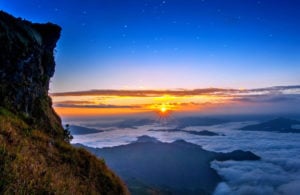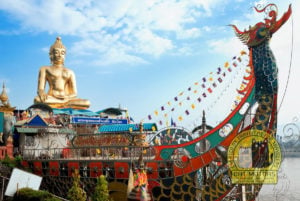Phrae Adventure: History, Culture, Nature on Wheels!
Phrae, a province in northern Thailand that has won the hearts of many, reveals the captivating heritage and genuine allure of the Lanna Kingdom. This province is a treasure trove of intricately preserved teak houses, temples, and museums, set against a backdrop of breathtaking mountains, forests, and rivers. But what makes it so unique, and why does it attract visitors far and wide?
Phrae, an ancient city dating back to the 9th century, carries a rich historical significance. Once a thriving hub of the teak trade, it attracted merchants and nobles from across the region.
Today, its stylish architecture, skilled craftsmanship, and fascinating museums like Vongbury House Museum and Khum Chao Luang Museum, as well as its temples like Wat Phra Baht Ming Meuang and Wat Luang, showcase the legacy of its prosperous past.
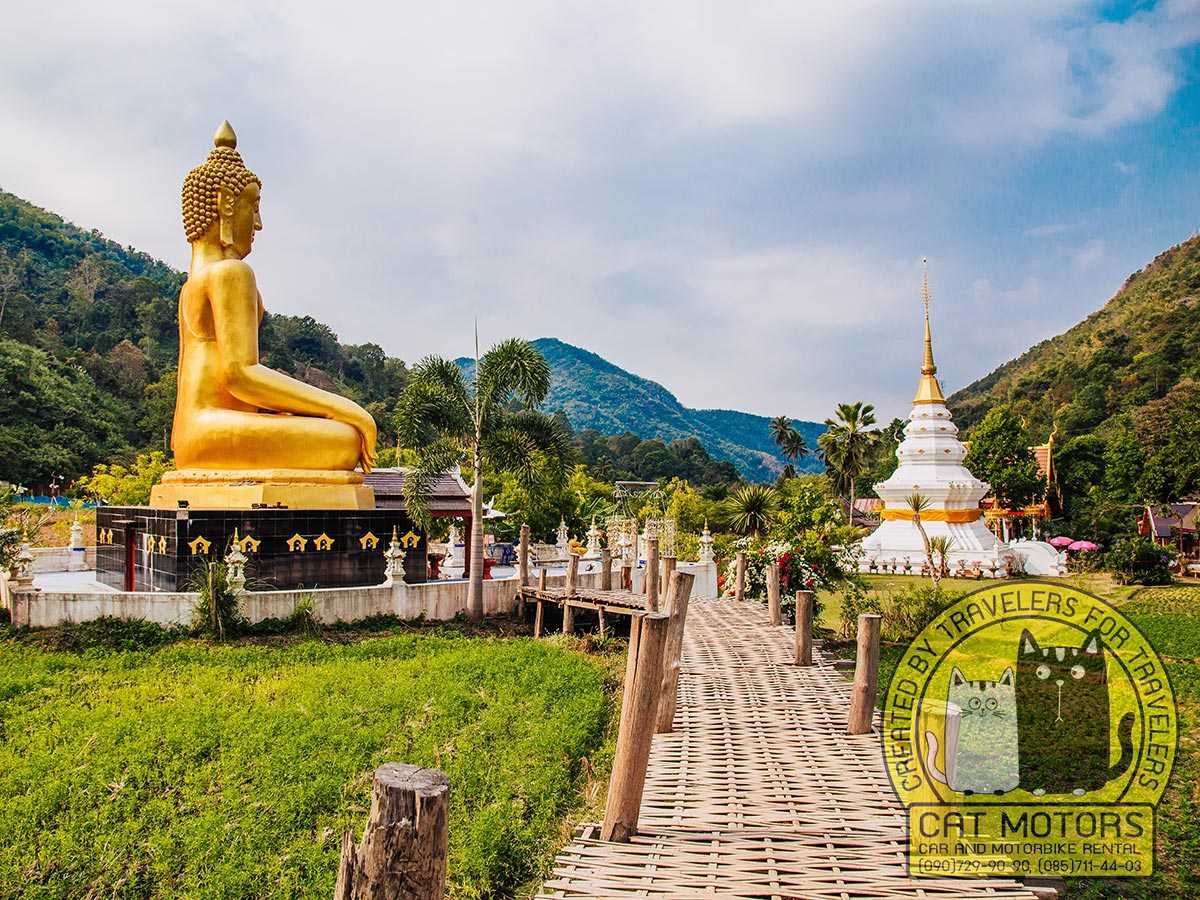
Wat Na Khuha is located in Mueang District, Phrae Province, about 25 kilometers from downtown Phrae (Google Map). The temple is situated in Na Khuha Village, nestled amidst hills and pristine nature. It’s recognized as a high-quality ozone source, ranking first among Thailand’s top seven. The temple complex features a large statue of the Buddha, Phra Chao Than Jai, set in the middle of a rice field. There’s a long bamboo bridge stretching from the Buddha statue across the fields for leisurely walks and view admiring. The surrounding natural scenery of the temple is exceptionally beautiful.
Read on as this travel guide journies through Phrae’s timeless wonders as we reveal its top attractions, offer insider tips, and present delightful experiences for your visit. Additionally, we’ll introduce you to nearby destinations and hidden gems to further enhance your exploration of this underrated marvel.
Getting To Know Phrae's Captivating History And Culture
If you’re eager to delve into the province’s captivating past and vibrant present, prepare for a journey that intertwines centuries of history and diverse influences from different kingdoms, religions, and ethnic groups. It has many threads of culture waiting to be discovered, offering a wealth of experiences that showcase its rich heritage.
So, before you visit, getting to know its remarkable history and unique cultural traditions will make this old town and province that much more of an extraordinary destination!
Storied History
Phrae has a rich history that tells stories of ancient kingdoms, rebellions, and the teak trade. Once known as Muang Phon, it thrived under the guidance of benevolent kings and revered monks who built magnificent temples and monuments.
In 1443, it fell under the rule of King Tilokaraj of Lan Na, leading to a rebellion in 1545 that was tragically crushed. Later, in 1775, King Taksin of Siam restored Phrae to Lan Na’s domain. Today, the province offers a glimpse into Thailand’s history, with its preserved old town, elegant teak mansions, and ancient temples like Wat Phrathat Cho Hae.
The region’s history also involves the teak trade, which brought wealth but caused environmental and social problems. British companies exploited the province’s teak forests, leading to deforestation and clashes with the locals. However, the province persevered and established national parks and wildlife sanctuaries to protect its natural treasures.
Present-day Phrae invites visitors to experience its charming architecture, historical sites, and diverse cuisine. It demonstrates the resilience and beauty of this beautiful province, deserving attention and appreciation from those seeking a different side of Thailand.
Tip: To unravel the intriguing history of this province, immerse yourself in its museums, like the Vongbury House Museum and the Khum Chao Luang Museum. Phrae certainly has a much more in-depth and fascinating story to tell!
Immersive Cultural Traditions
The province has a cultural tapestry that weaves a unique identity deeply rooted in its diverse history.
The locals of the province are renowned for their exceptional hospitality, generous spirit, and simplicity. Phrae boasts vibrant traditions and festivals, including the Wat Phra That Cho Hae Festival.
- Depending on the lunar calendar, the festival, which takes place every February or March, honors the Buddha’s sacred hair relic enshrined in the temple’s chedi. Witness the colorful procession of devotees carrying offerings and flowers as they climb up the hill to pay respect to the ancient relic.
Another cultural gem is the Saturday Walking Street Market, also known as Kad Phra Non. This vibrant market springs to life every Saturday from 5 pm to around 10 pm, transforming the roads near the city moat into a bustling hub of activity. Immerse yourself in the lively atmosphere as people from all backgrounds gather to explore the diverse array of offerings.
- At the Saturday Walking Street Market, you’ll discover local products showcasing Phrae’s craftsmanship and creativity. Browse through colorful stalls adorned with clothing, accessories, and unique souvenirs while indulging your taste buds with delectable street food, teasing your senses with irresistible flavors and aromas.
It also serves as a stage for local artists to shine. Experience captivating performances by talented musicians, dancers, and puppeteers, offering a glimpse into the rich cultural heritage of Phrae. This vibrant market also provides a wonderful opportunity to mingle with friendly locals, engage in conversations, and forge connections!
Exploring It’s Natural Beauty: What To Expect
This charming province offers a blend of cultural heritage and breathtaking natural scenery. With many public transport routes to get there, such as taking the popular Green Bus from Phrae bus station,the region –around 179km (111 miles) from Chian Mai’s border, boasts a tropical savanna climate and is surrounded by the Phi Pan Nam and Phlueng mountain ranges.
Situated in the Yom River valley, Phrae is blessed with a tropical savanna climate characterized by hot, dry winters and humid, rainy summers. And to get a better idea, the average temperature is 26.4 °C (79.5 °F), and the average rainfall is 1,114.8 mm (43.89 in) per year.
With its diverse flora and fauna, the province’s protected areas, covering 35.4% – 2,297 km2 (887 sq mi) – of the provincial area, house endangered species like Asian elephants, Indochinese tigers, Siamese crocodiles, and giant freshwater stingrays. That said, let’s explore some of Phrae’s remarkable natural attractions and their ecological significance.
The province is home to four national parks and two wildlife sanctuaries, and among them are:
Phae Mueang Phi Forest Park
Step into a realm of mystery and natural wonders at Phae Mueang Phi Forest Park (Google Map). This sacred forest park boasts breathtaking red-brown rock columns, sculpted over millions of years by the forces of erosion. Known as the Spirit Grove or Forest City of Ghosts, this enchanting park carries legends of lost souls and haunted encounters.
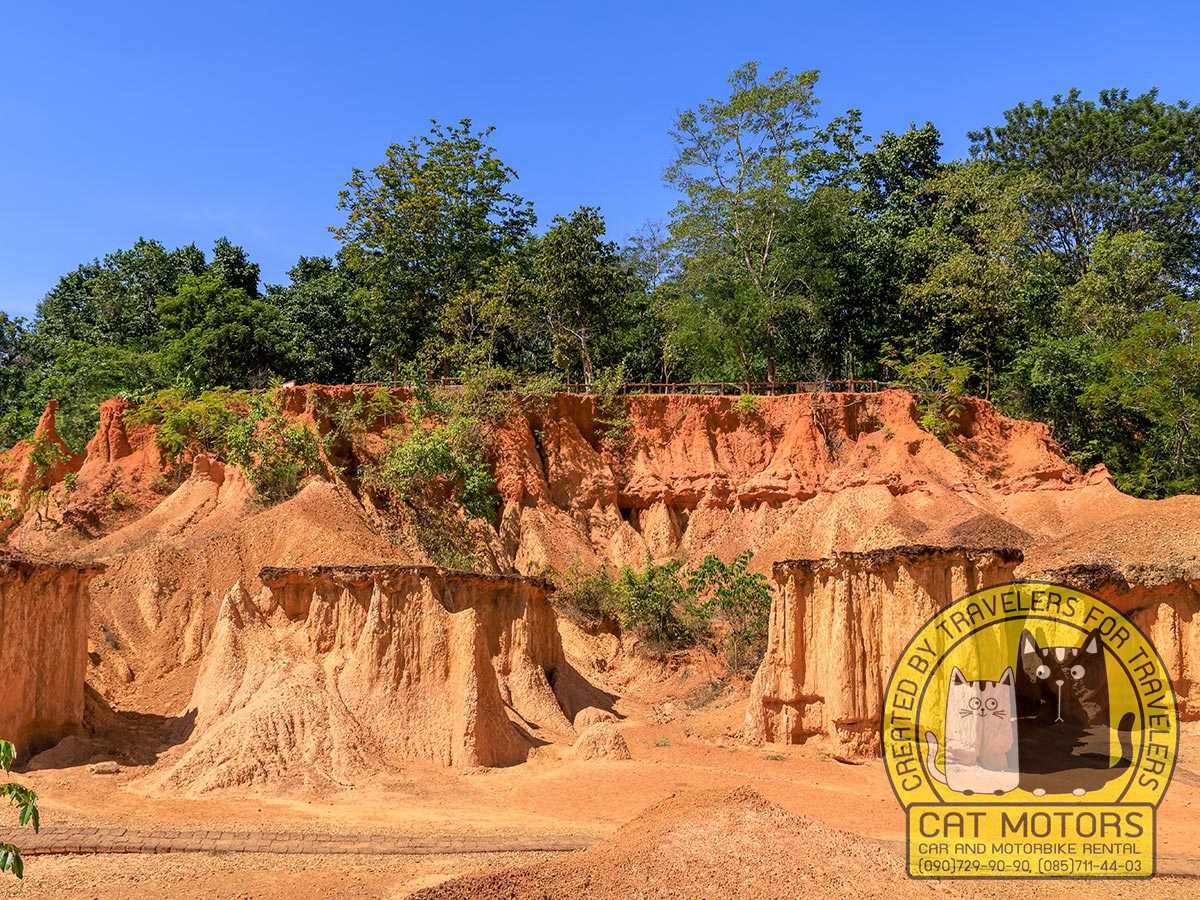
Explore the intriguing formations, immerse yourself in the eerie atmosphere, and brave yourself into uncovering the secrets of this captivating destination. Phae Mueang Phi Forest Park is a must-visit for those seeking an otherworldly experience in nature’s embrace!
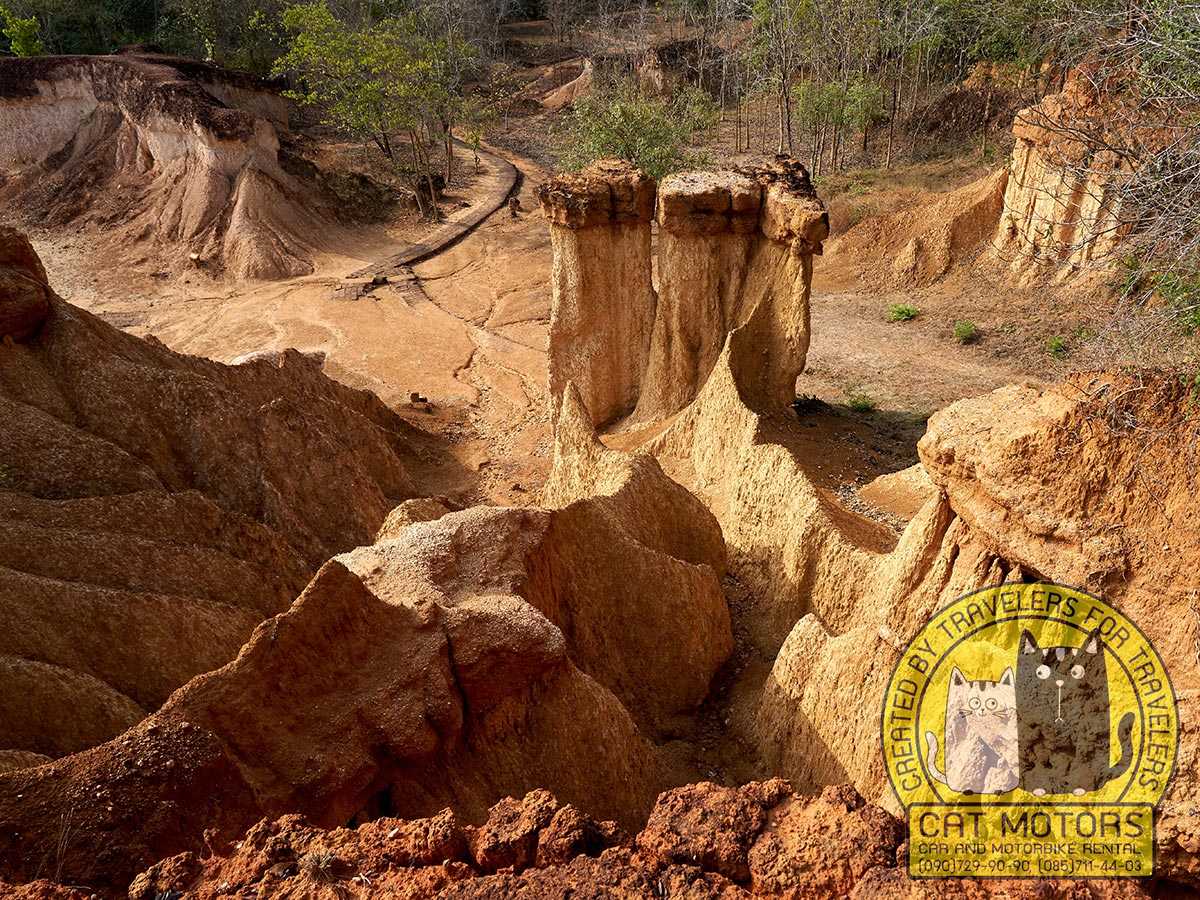
Tham Pha Nang Khoi Cave
Nestled 34 kilometers away from the heart of Phrae city, in Amphoe Rong Kwang, you’ll find Tham Pha Nang Khoi (Google Map), a mesmerizing cave steeped in myth and natural splendor. Accessible via the Phrae-Rong Kwang route, Highway No. 101, you’ll need to take a short 800-meter detour at Km 58-59 to reach the cave’s entrance.
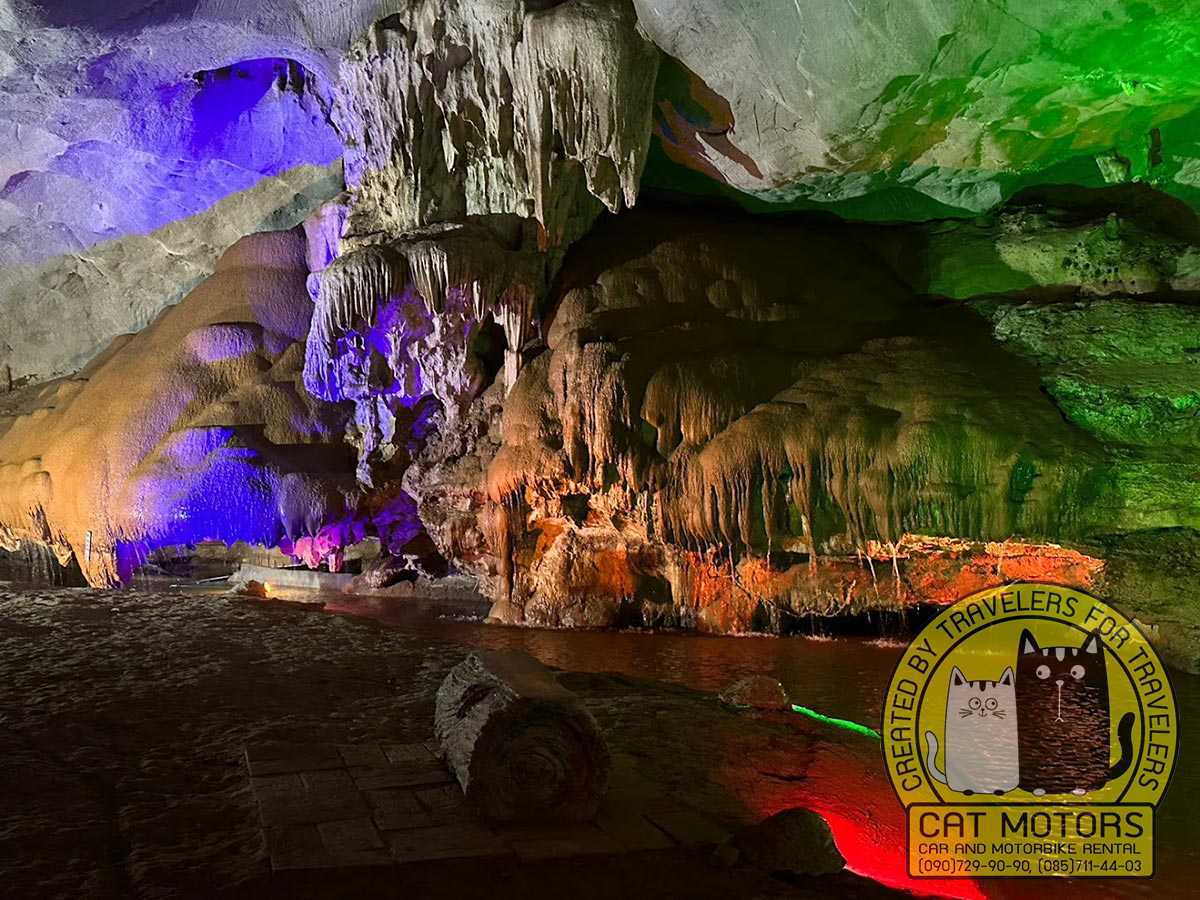
Perched atop a 50-meter cliff, Tham Pha Nang Khoi beckons with a labyrinthine tunnel, stretching 150 meters long and 10 meters wide. The journey inside unveils a series of captivating turns, first to the left, followed by three right turns, leading you through a spectacle of glistening stalactite and stalagmite formations.
The cave’s crowning glory lies at its far end, where a stone formation, eerily resembling a woman cradling a small child, captivates visitors. This intriguing formation spun a local legend about a woman who waited endlessly for her husband. Adding to the cave’s charm is a heart-shaped stalactite situated in front of this stone figure. The cave is also a place of reverence, housing a venerated Buddha image.
Huai Rong Sticky Waterfall
Just a stone’s throw away from the mystic Pha Nang Khoi Cave, Huai Rong waterfall (Google Map) unfurls in all its majestic glory. This towering spectacle is more than just a waterfall – it’s an enchanting stage for photography enthusiasts, where the tropical sun paints ever-changing patterns on the canvas of cascading water and moss-dappled rocks. The sheer height of Huai Rong lends a touch of grandeur to its surroundings, transforming each falling droplet into a spark of light that dances in the balmy Thai air. On top of that, it’s a sticky waterfall that you can climb on.
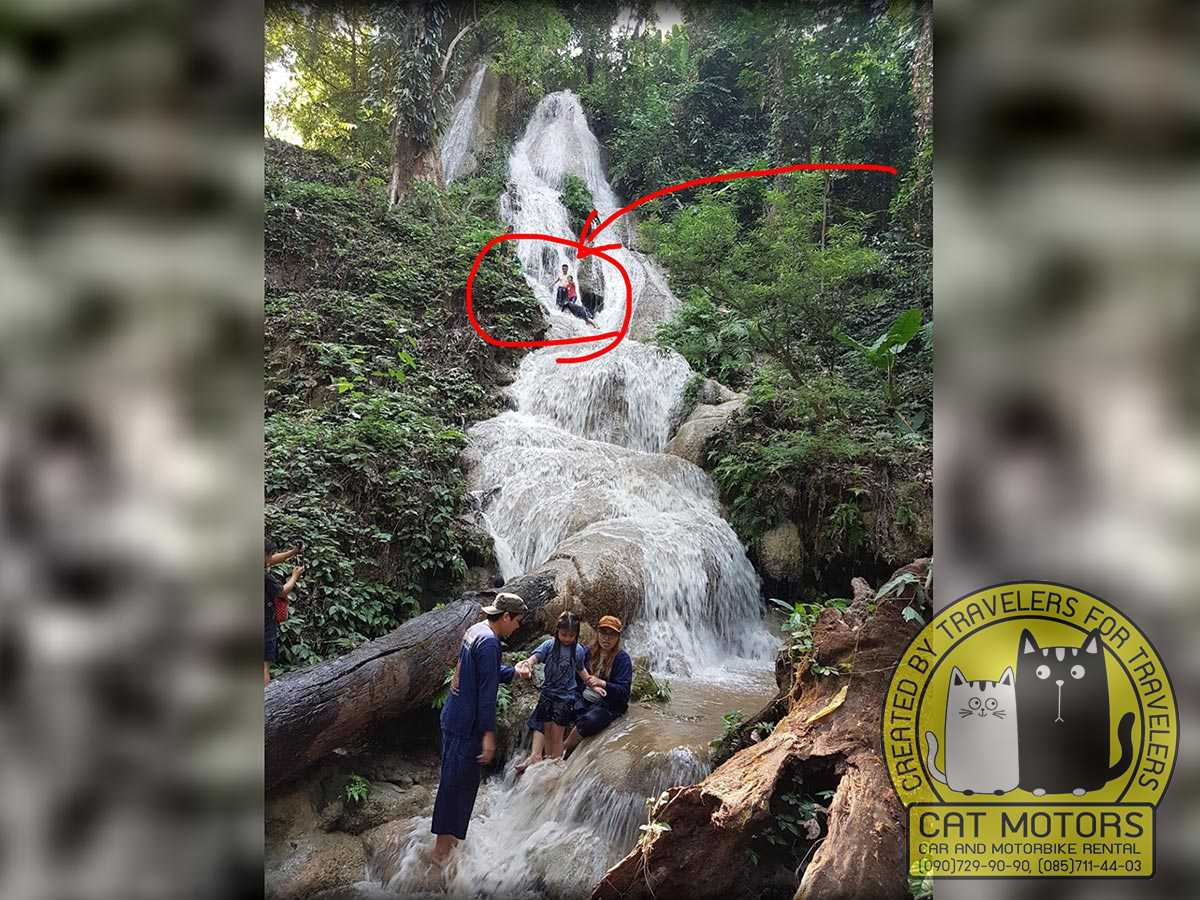
Tucked away in an intimate corner of Phrae, the Huai Rong waterfall exudes a serenity that is as refreshing as its waters. Amid the soothing symphony of tumbling water and rustling foliage, the world outside seems to slip away, allowing for a deeper connection with nature’s untouched splendor. The meandering trails that lead to the waterfall, cocooned by the verdant embrace of the jungle, bring you face-to-face with the awe-inspiring vista of the waterfall, capturing the hearts of adventurers and photographers alike. The allure of Huai Rong waterfall is compelling and magnetic – a hidden gem in Phrae that captivates and inspires, making it an essential addition to any traveler’s Thai journey.
Wiang Kosai National Park
Established as a national park on October 9, 1981, the park is a fusion of hill evergreen forest, mixed deciduous forest, and deciduous dipterocarp forest. The park’s geographical layout features steep mountains, which are home to pine forests and savannahs, and give birth to numerous streams such as Mae Koeng, Mae Chok, and Mae Sin. The park’s rich fauna includes wild pigs, red junglefowl, bears, palm civets, tigers, Sumatran serows, and a variety of bird species.
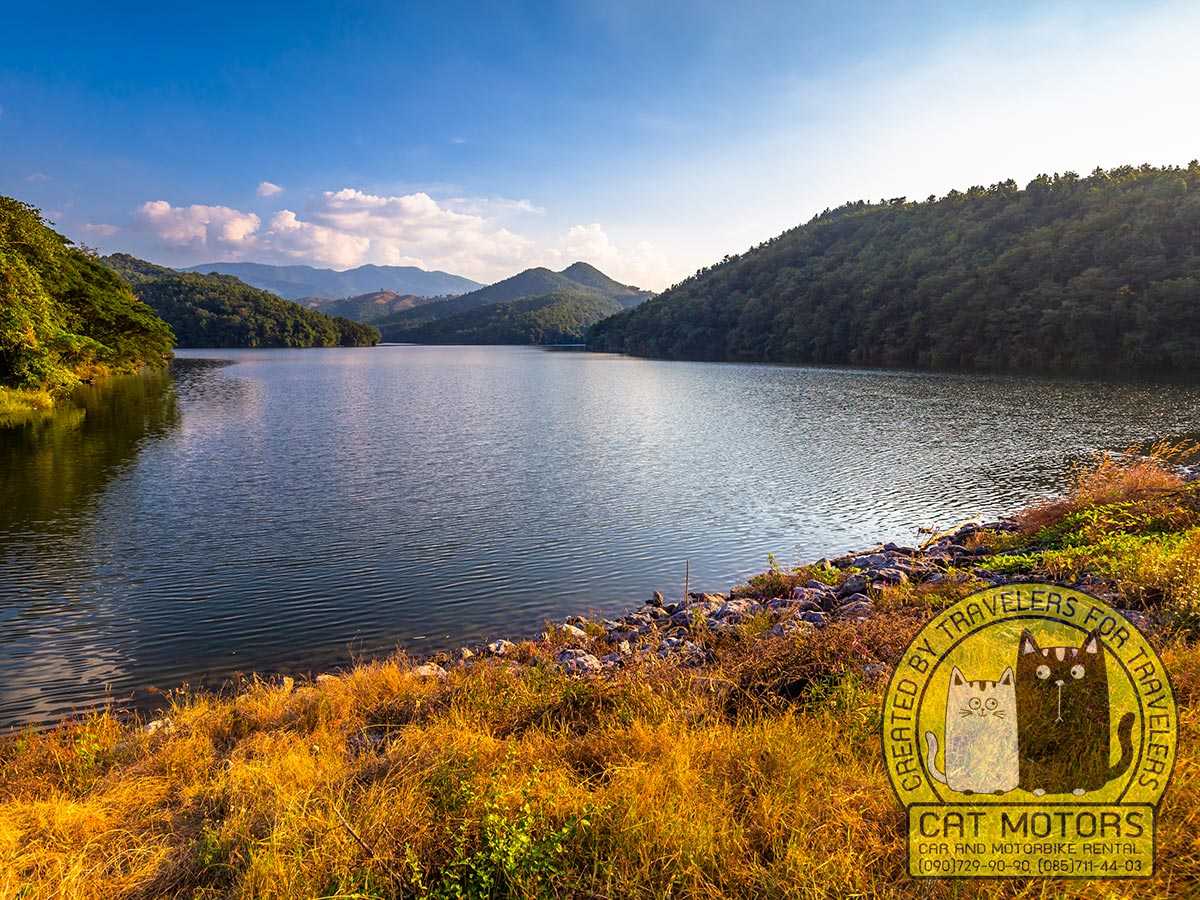
The park’s major attraction is a dense grove of century-old ironwood trees. A challenging 15-kilometer hike from the headquarters will get you there. Some tree trunks are so vast that it takes a team of 3-4 adults to encircle them.
Notable sites within the park include the cascading waterfalls, Namtok Mae Koeng Luang and Mae Koeng Noi. With their stair-like cascades – a feature reflected in their local name Mae Koeng – these waterfalls originate from Doi Mae Koeng. You’ll find Namtok Mae Koeng Luang located just a kilometer from the park’s headquarters while Mae Koeng Noi is a 2-kilometer hike. These waterfalls eventually feed the Yom River at Ban Sop Koeng, Amphoe Wang Chin. Other picturesque waterfalls worth exploring include Mae Sin, Mae Chok, Mae Pak, Mae Rang, and Khun Huai.
The park offers four guesthouses and a campsite that can accommodate up to 150 tents, with a maximum of two people per tent. Private tent pitching is available at a fee of 30 baht/person. The park also rents out 50 tents, with a total rental fee (including sleeping gear) of 150 baht.
For more information, reach out to the Wiang Kosai National Park, P.O. Box. 1, Amphoe Wang Chin, Phrae 54160 or Phrae Information Centre, Tel. 054556736 or visit www.dnp.go.th
To reach Wiang Kosai National Park, which is about 75 kilometers from the provincial city of Phrae, drive on Highway No. 101. After crossing Amphoe Den Chai for 10 kilometers, make a right turn onto Highway No. 11 (Phrae-Lampang route) and continue for another 40 kilometers. When you reach the intersection to Amphoe Wang Chin, turn left and go on for 13 kilometers. Take a right turn, and after another 1.5 kilometers, you’ll arrive at the park’s headquarters. If you’re relying on public transport, take the green bus No. 169 from Phrae and disembark at the Mae Khaem intersection. From there, hire local transportation that runs along Highway No. 11 to the park.
Mae Yom National Park
Embark on an unforgettable adventure at Wiang Kosai National Park, a haven of natural wonders and thrilling exploration. Located along the Yom River, one of the last free-flowing rivers in Thailand, this park offers a sanctuary amid lush landscapes. Discover the park’s fascinating rapids and sandbanks, which transform into picturesque islands during the dry season.
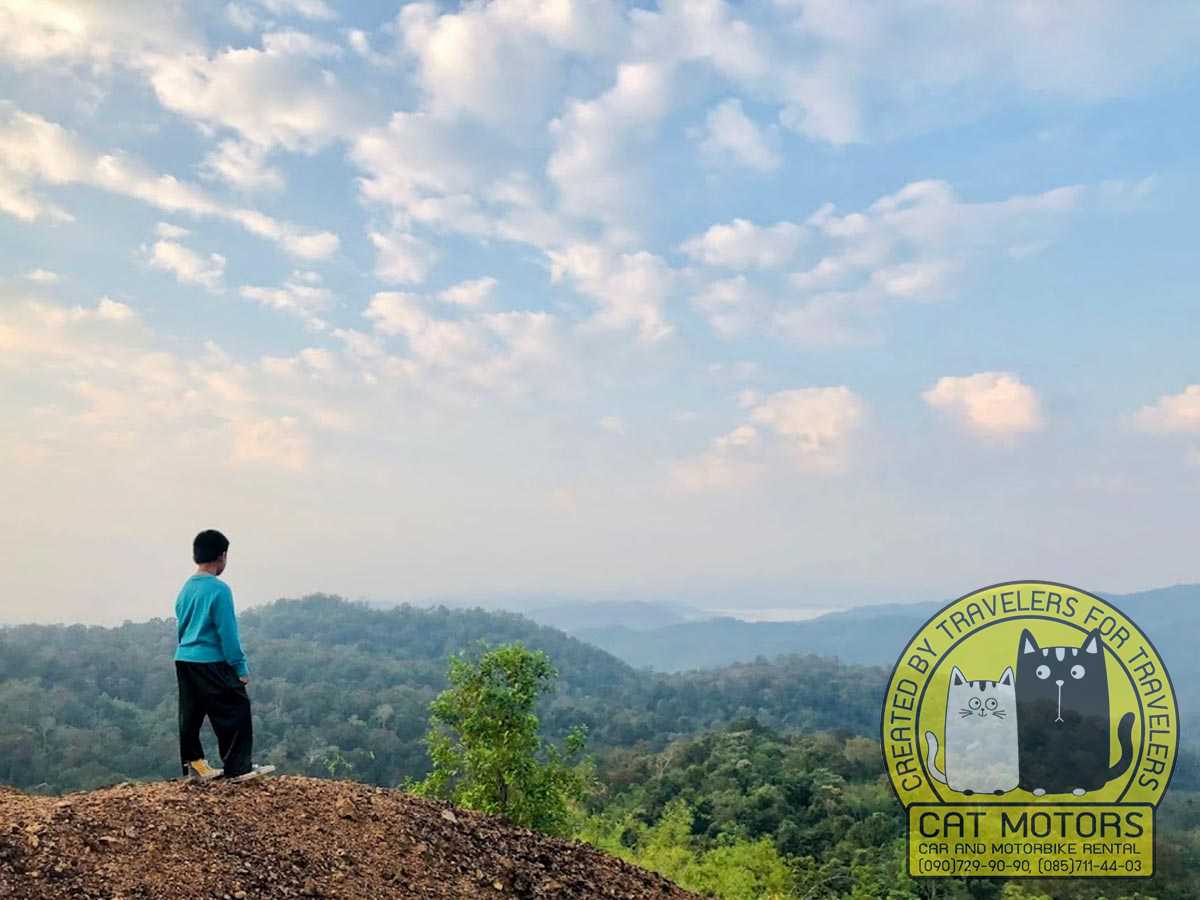
Spanning an expansive area of roughly 284,218.75 rai, this park straddles two provinces, specifically Amphoe Song in Phrae and Amphoe Ngao in Lampang. Established as a national park on March 1, 1986, it boasts a terrain of undulating mountains and predominantly mixed deciduous forests. The Yom River, a perennial waterway, meanders for 43 kilometers through the park.
Several intriguing sites can be found in the park, including:
Kaeng Suea Ten Rapids: Situated just in front of the park headquarters, Kaeng Suea Ten is a naturally formed island extending for 2 kilometers. Named after a stone discovered with a tiger’s footprints, the beaches encircling the island make perfect camping sites. However, private tent pitching is subject to a 30 baht per person nightly fee. The area is also a hotspot for white-water rafting, though enthusiasts need to bring their own equipment.
Dong Sak Ngam: Situated around 25 kilometers from the park headquarters, Dong Sak Ngam is a 12-kilometer stretch of dense teak forest along the Yom River, located in the Mae Pung-Mae Pao National Forest Reserve. Only accessible on foot, this could potentially be Thailand’s largest teak forest. The teak trees here are notably large and towering, and from August to September, they come alive with vibrant yellow flowers.
Lom Dong: Nestled in the Mae Pung-Mae Pao National Forest Reserve, 15 kilometers from the park, is Lom Dong, a sizeable swamp with a diameter of 100 meters. Situated high on a mountain, it serves as a watering hole for wildlife throughout the year. Interestingly, this swamp has no obvious water source and maintains a constant water level, suggesting that it may be replenished by rainwater or seepage. Nearby, visitors can find a camping ground, a scenic viewing spot for the teak forest, sunrise, and sunset, and a plot of Lagerstroemia cuspidata Wall.
- Eing Mok cliff: From this cliff (Google Map), you have stunning and delightful views of the surrounding area. Be sure to visit this place for unforgettable memorable photos.
The optimal time to visit the park is from November to January, given the Yom River’s vigorous flow during the rainy season, which can pose transportation challenges.
Get up close to playful gibbons, majestic hornbills, and elusive barking deer in teak forests. Wiang Kosai National Park invites you to experience the untamed beauty of nature at its finest!
Akha Swing Festival: Celebrated in winter, this festival showcases the traditional lifestyle of the Akha hill tribe. The villages, situated within the national park and approximately 40 kilometers from the headquarters, are particularly lively during this period.
Doi Pha Klong National Park
Nestled along a majestic mountain range bordering Laos, Doi Pha Klong National Park beckons adventurous souls. Prepare to be mesmerized by sweeping vistas of picturesque valleys and undulating “coral hills” at Phukhao Hin Pakarang, revealing nature’s awe-inspiring beauty.
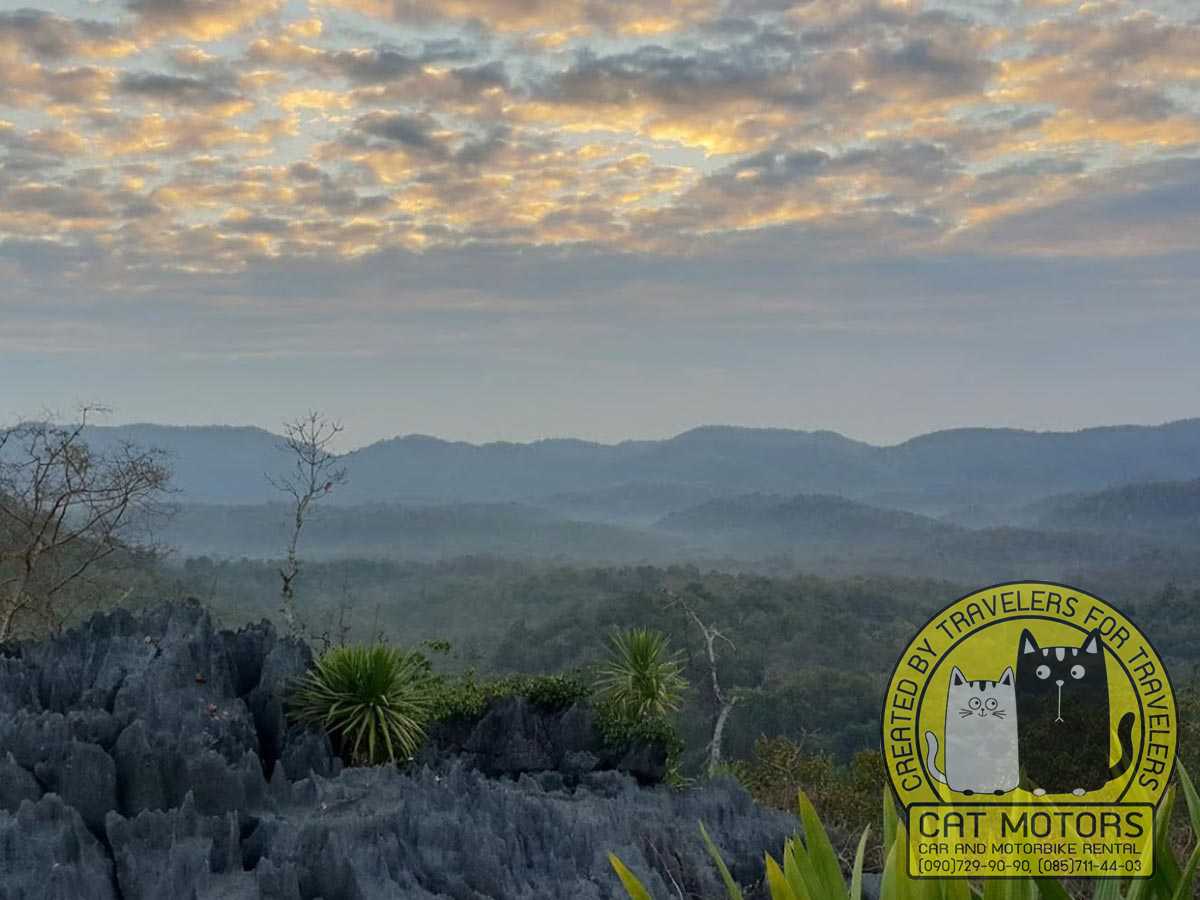
Spanning over 117,982 rai, this awe-inspiring landscape is dominated by high mountain ranges, acting as the source of multiple streams that feed the Yom River. The predominant vegetation is mixed deciduous forest, home to unique flora like Dracaena lourieri, Ensete superbum, and Spathoglottis, as well as an array of herbs. Wildlife enthusiasts will enjoy spotting Sumatran serow, bears, barking deer, red junglefowl, wild pigs, civets, and a variety of birds such as migratory Minivets in winter.
Only about 20 kilometers from the city of Phrae, the park’s headquarters is easily accessible via Highway No. 1023, between Km. 19-20. For those using public transportation, a navy-blue local mini-bus (or songthaew), Amphoe Long line, from Thalat Chomphu Ming in Amphoe Mueang Phrae will get you there conveniently.
Don’t miss out on these fascinating spots:
Suan Hin Maharaj: Right at the park’s entrance, this rock garden, also known as Suan Hin Maharaj (Google Map), showcases gigantic rocks of various shapes nestled within a deciduous dipterocarp forest. It’s a quick detour via Highway No. 1023 (Phrae-Long route), located at Km. 19-20 on your left-hand side.
Phukhao Hin Pakarang: This remarkable “coral mountain” (Google Map), sculpted by billions of years of tectonic movement, erosion, and upthrust, is nestled at Km. 18 – 19. Be prepared for the challenging 1,200-meter nature trail. Comfortable, sturdy sneakers are a must. The cooler morning hours make for a more enjoyable hike. Expect a natural “air-conditioned” sensation as moisture from the cave is blown out of the narrow entrance, resulting in a refreshing cool breeze. The trail ends at a stunning scenic viewpoint.
Other attractions include Kaeng Lung – Tham Erawan in Tambon Ban Pin, Amphoe Long. For a small fee of 20 Baht, rent a flashlight for an adventurous cave exploration. The park also provides two bungalows for an overnight stay, priced at 1,200 Baht each. Admission fees are reasonable: 10 Baht for children, 20 Baht for adults, and 30 Baht for vehicles.
Mystical caves, cascading waterfalls, and breathtaking rock formations await this natural treasure. Plus, you could encounter rare orchids and ferns, adding a touch of enchantment to your unforgettable journey. Doi Pha Klong National Park invites you to witness nature’s mystique and embark on an extraordinary expedition.
These protected areas showcase the province’s natural wonders, such as ancient forests, mushroom-shaped rock formations, caves, and waterfalls. Explorers can engage in various activities like hiking, biking, kayaking, and simply immersing themselves in the serene beauty of its environment.
It is recommended to visit this place in the evening to watch the amazing sunset. And don’t forget to charge your phones so you don’t get lost without your e-maps.
Nature's Biodiversity: Flora And Fauna Delights
Phrae’s diverse topography and climate create a haven for a stunning array of flora, including the enchanting Garden Angelica and the vibrant Luculia Gratissima, providing a visual feast for nature enthusiasts.
- The province also boasts an impressive wildlife population, where majestic Asian elephants roam freely, captivating Indochinese tigers prowl in their natural habitat, and elusive Malayan tapirs gracefully traverse the terrain, offering a glimpse into the phenomena of the animal kingdom.
- Moreover, Phrae’s skies come alive with the melodic calls of colorful hornbills, while its waters teem with fascinating reptiles, such as crocodiles and pythons, sharing the landscape with graceful deer species.
These mesmerizing creatures are complemented by a symphony of vibrant birds, compelling amphibians, attractive fish, and industrious insects, creating a harmonious ecosystem that captivates the senses and showcases the region’s ecological splendor.
The Marvels Of Phrae: Discovering Culture And Adventure
Phrae holds a trove of cultural treasures, calling travelers and locals alike on a journey through time as you explore the historical landmarks, temples, museums, and outdoor adventures that make this place an enchanting destination.
Here are the top attractions that will captivate your senses and leave you with cherished memories.
Unveiling The Historical Charms
Step into the realm of Phrae’s fascinating history, where each landmark and temple tells a tale of the past:
Khum Chao Luang Museum
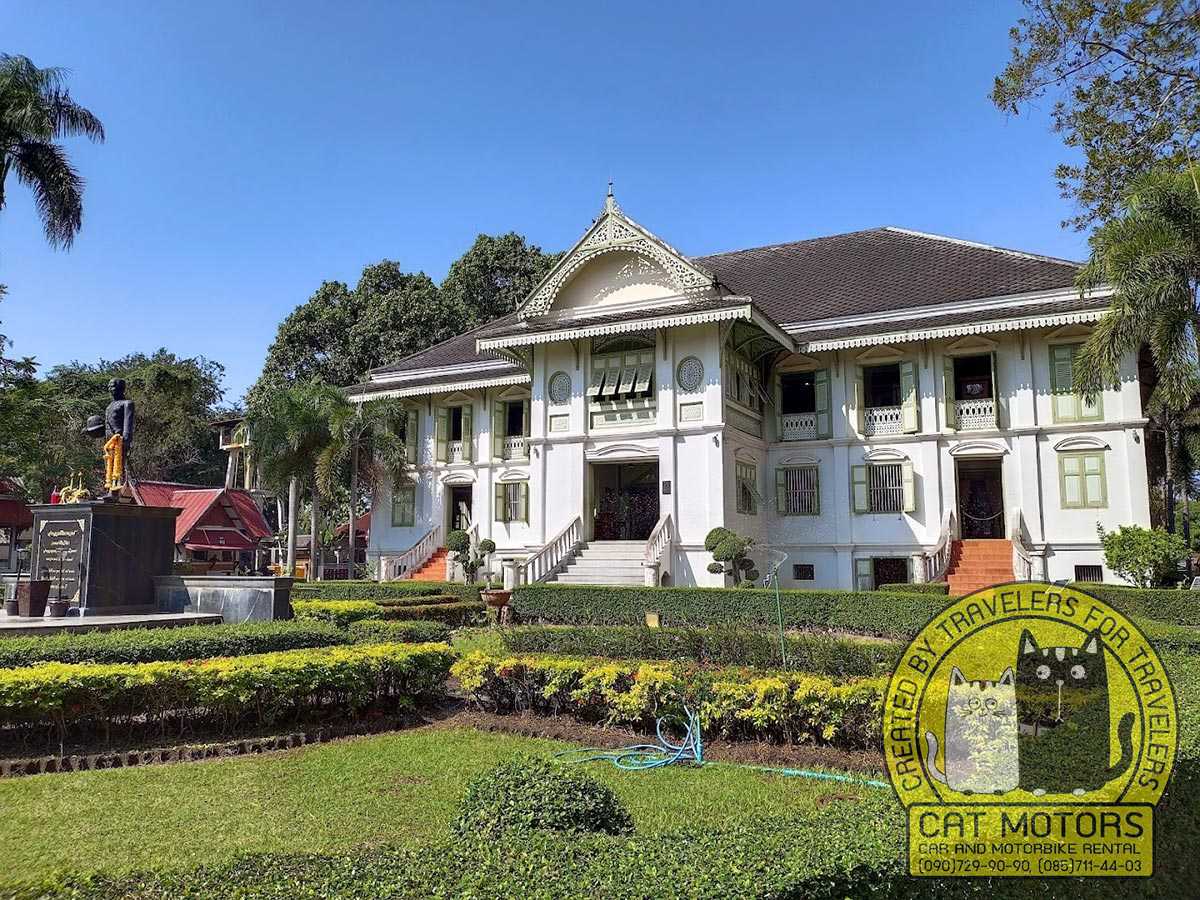
Dive into the past at the residence of the province’s last lord. This architectural masterpiece (Google Map) combines Thai and European influences, housing a captivating collection of artifacts and photographs that illuminate the region’s rich heritage!
Khum Vongburi Museum: The Pink Mansion
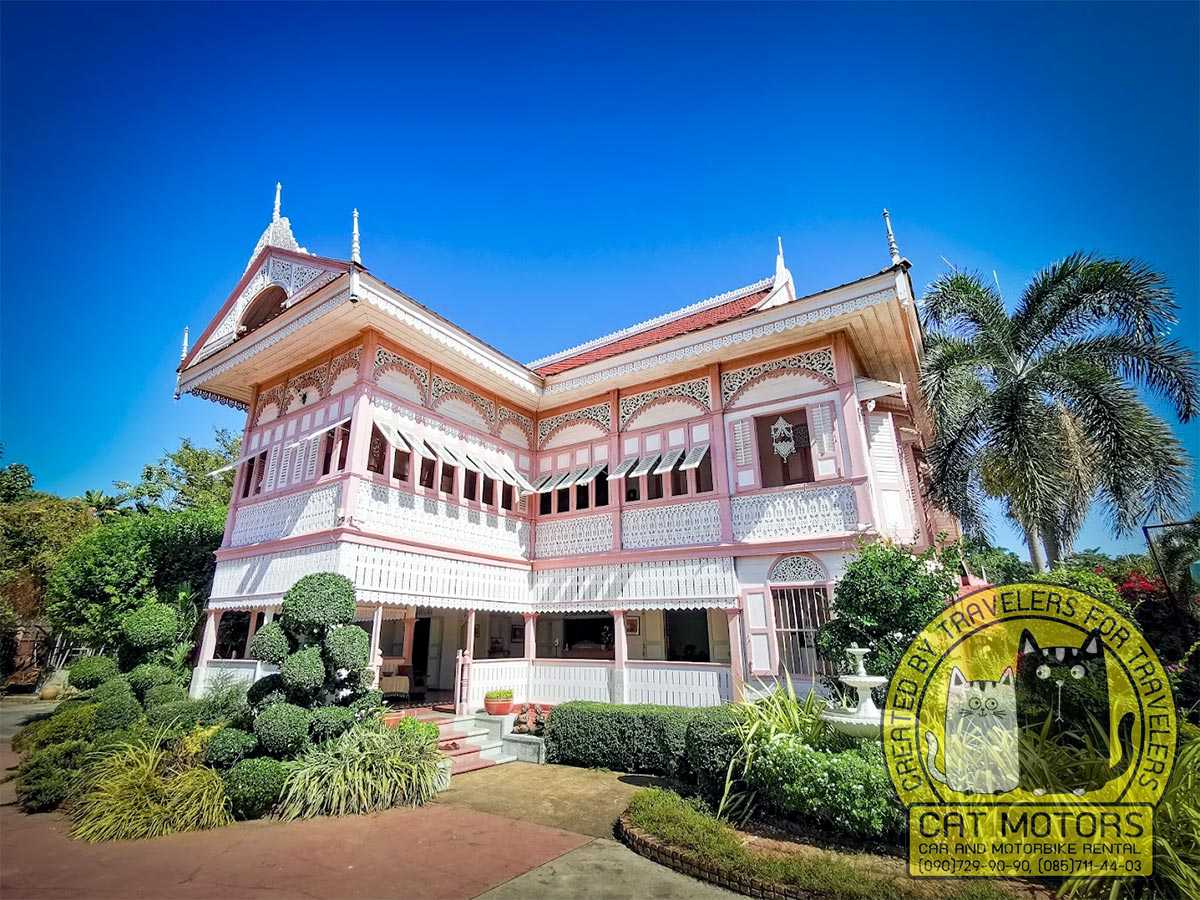
Step into the grandeur of a teak mansion transformed into a museum (Google Map). Wander through its rooms adorned with teak antiques, ceramics, and textiles, and be enchanted by the serene garden, complete with a pond and a dancing fountain.
Please note that in some travel sources this museum may be called Ban Wongburi.
Wat Luang and Museum
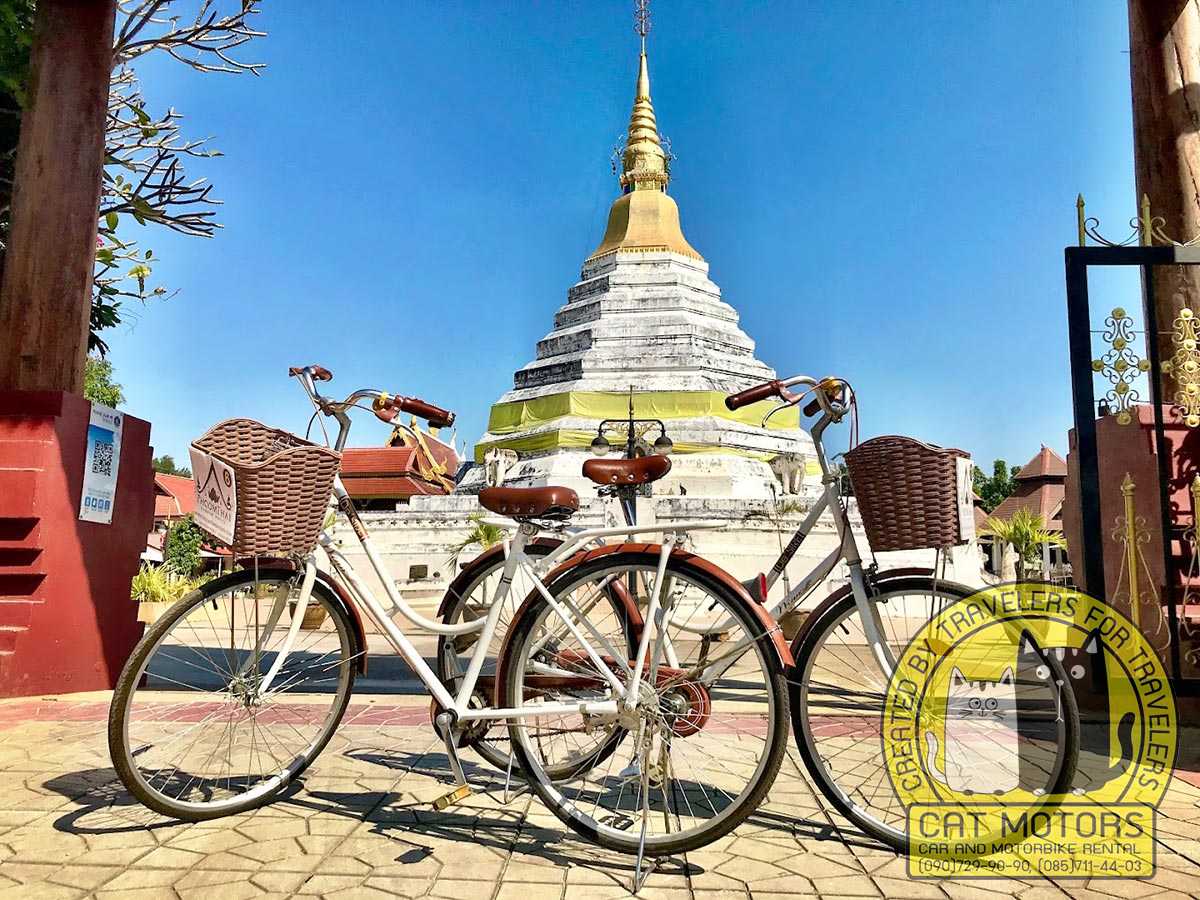
Journey back to the 12th century and witness the oldest and most revered temple in Phrae. Marvel at the harmonious blend of Luang Prabang-Lan Xang and Lanna architectural styles, and explore the temple’s museum, which showcases ancient relics, Buddha images, and sacred artworks.
Wat Phra That Cho Hae
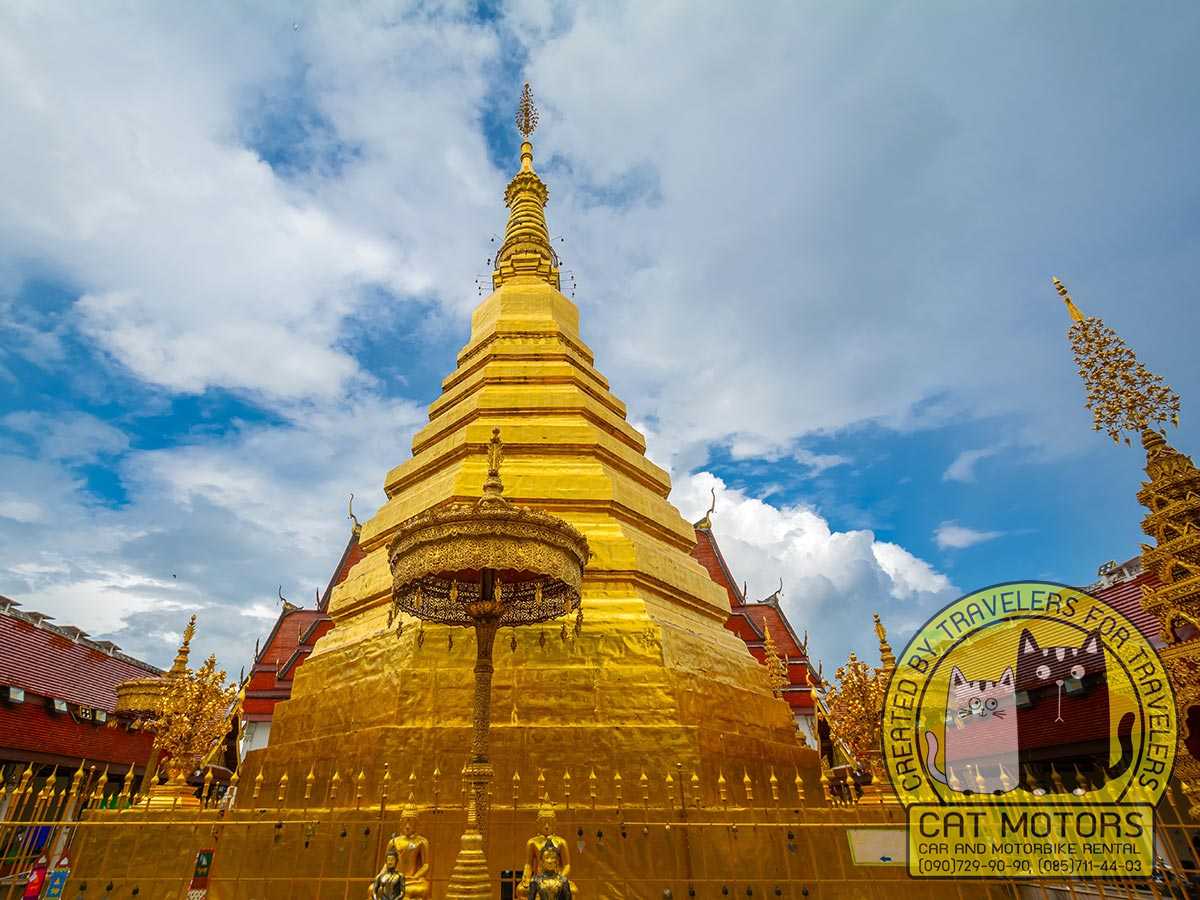
Ascend a hill to discover this sacred temple, home to a revered relic of Buddha within its golden chedi. Enjoy breathtaking bird’s-eye views of the surrounding countryside and immerse yourself in the vibrant festivities that unfold during Songkran, the Thai New Year celebration.
Get Lost In The Provinces Art And Culture
Delve into Phrae Thailand’s vibrant artistic heritage and dive into exploring its captivating museums and galleries:
Wat Phra That Suthon Mongkhon Khiri
Nestled in the idyllic landscapes of Phrae in Northern Thailand, Wat Phra That Suthon Mongkhon Khiri is a unique fusion of traditional Thai and Burmese temple architecture, combined with a sprinkle of Gothic-inspired nuances. This revered temple is not just a place of religious worship but an artist’s palette of culture, history, and spirituality.
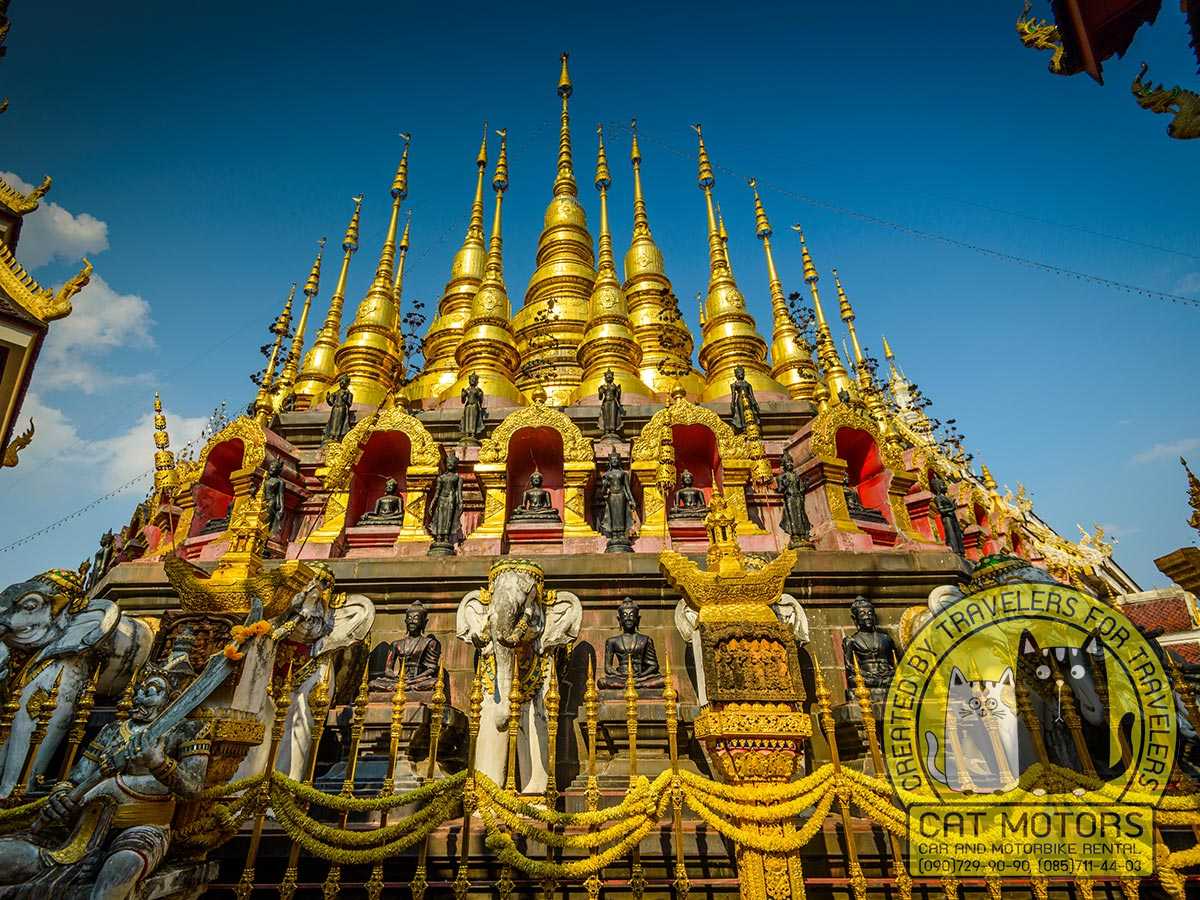
Marvel at the meticulously crafted Naga staircase, leading to a magnificent hall that houses a gold-coated Buddha statue. Explore the serene walkways, adorned with immaculate topiary and tranquil water features. Admire the grandeur of the 29.5-meter tall standing Buddha, lovingly encased in emerald green, that watches over the temple grounds.Dive deeper into the historical timeline encapsulated in the temple’s museum, where Buddhist teachings blend seamlessly with stories from the Ramayana. Don’t miss the remarkable collection of antique Lanna-style Buddha images, a visual treat for history and art enthusiasts alike.
Wat Chom Sawan
Tucked away in the charming town of Phrae, Wat Chom Sawan stands as a breathtaking testament to the marriage of Thai and Burmese architectural aesthetics. As one steps through its ornate entrance, it’s as if time itself slows down to match the tranquil pace of this majestic temple. Wat Chom Sawan, built in the late 19th century during the reign of Burmese rule, displays an extraordinary collection of Burmese craftsmanship. Its intricate woodwork, gilded decorations, and finely carved multi-tiered roof are more than just striking features – they are silent storytellers, inviting visitors into a bygone era that whispers its tales through its exquisite details.
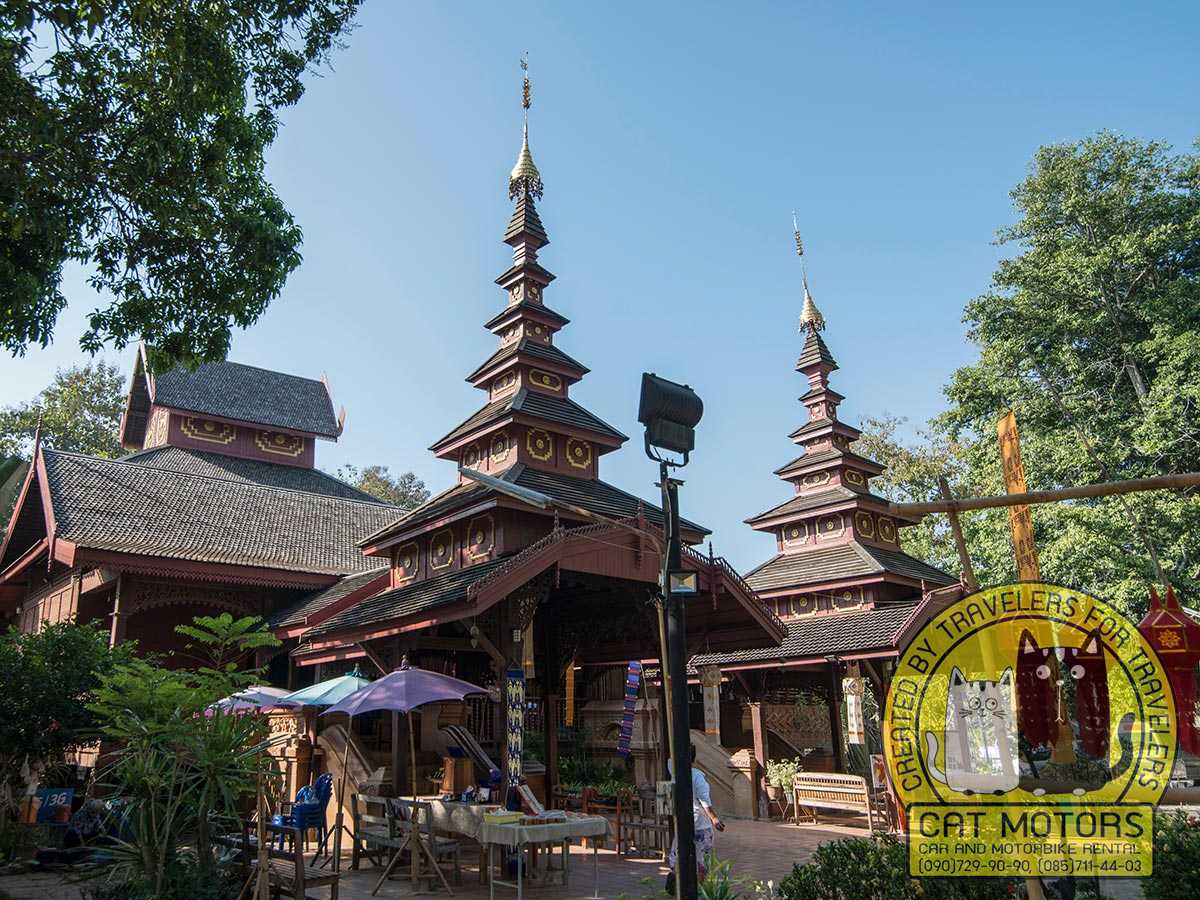
An oasis of tranquility, the temple also houses a gallery of precious Buddha statues, a testament to the temple’s religious significance. The centerpiece of the temple is the venerable teakwood Buddha statue, cradled under an impressive Pyatthat roof. Here, one can truly feel the spiritual energy resonating throughout the temple, punctuated by the melodious hum of chanting monks and the gentle scent of incense wafting through the air. For those looking to explore Thailand’s rich cultural fabric beyond the tourist trail, Wat Chom Sawan offers an unmatched journey into the heart of Northern Thai-Burmese heritage, a place where spirituality, artistry, and history converge in perfect harmony.
Wat Phra That Intr Kwaen
Nestled amidst towering trees, Wat Phra That Intr Kwaen is a forest monastery, providing a serene and relaxing environment to visitors. Walking paths under tree shades, a white vihara adorned with Naga-shaped handrails, and a series of Lord Buddha statues contribute to its tranquil ambiance. Recognized as one of Thailand’s seven ozone areas, the temple offers an escape from pollution, inviting visitors to enjoy the clean, fresh air.
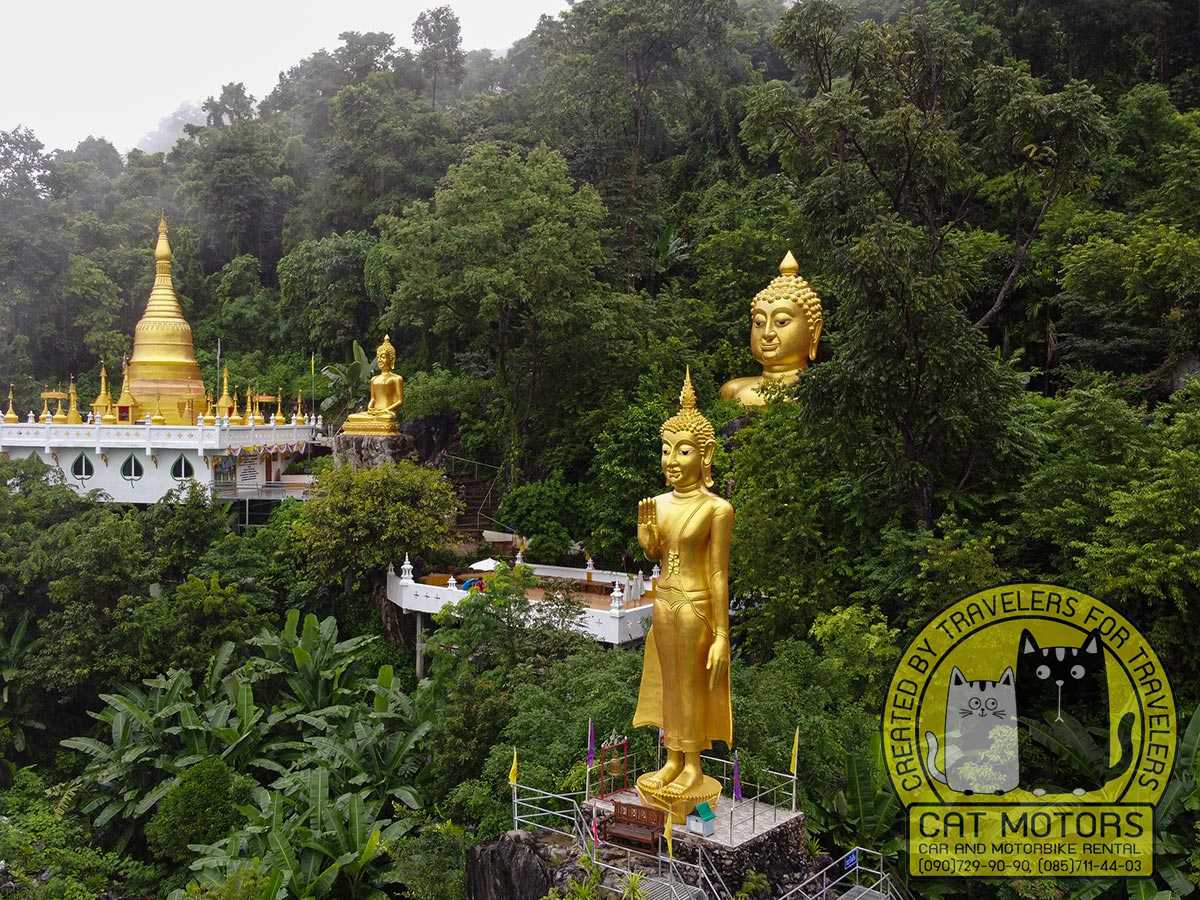
However, reaching the golden rock and pagoda involves a 200-meter stairway ascent, which might prove strenuous for those with heart conditions. The climb rewards with stunning views of the golden rock and pagoda, a footprint of Lord Buddha, and an educational opportunity for younger visitors to appreciate the beauty and religious significance of the site.
The temple is easily accessible via Highways No.101, 1101, and 1024. It’s open daily from 8 am to 5 pm, and admission is free, making it an unmissable addition to any Phrae itinerary.
Baan Pratubjai House
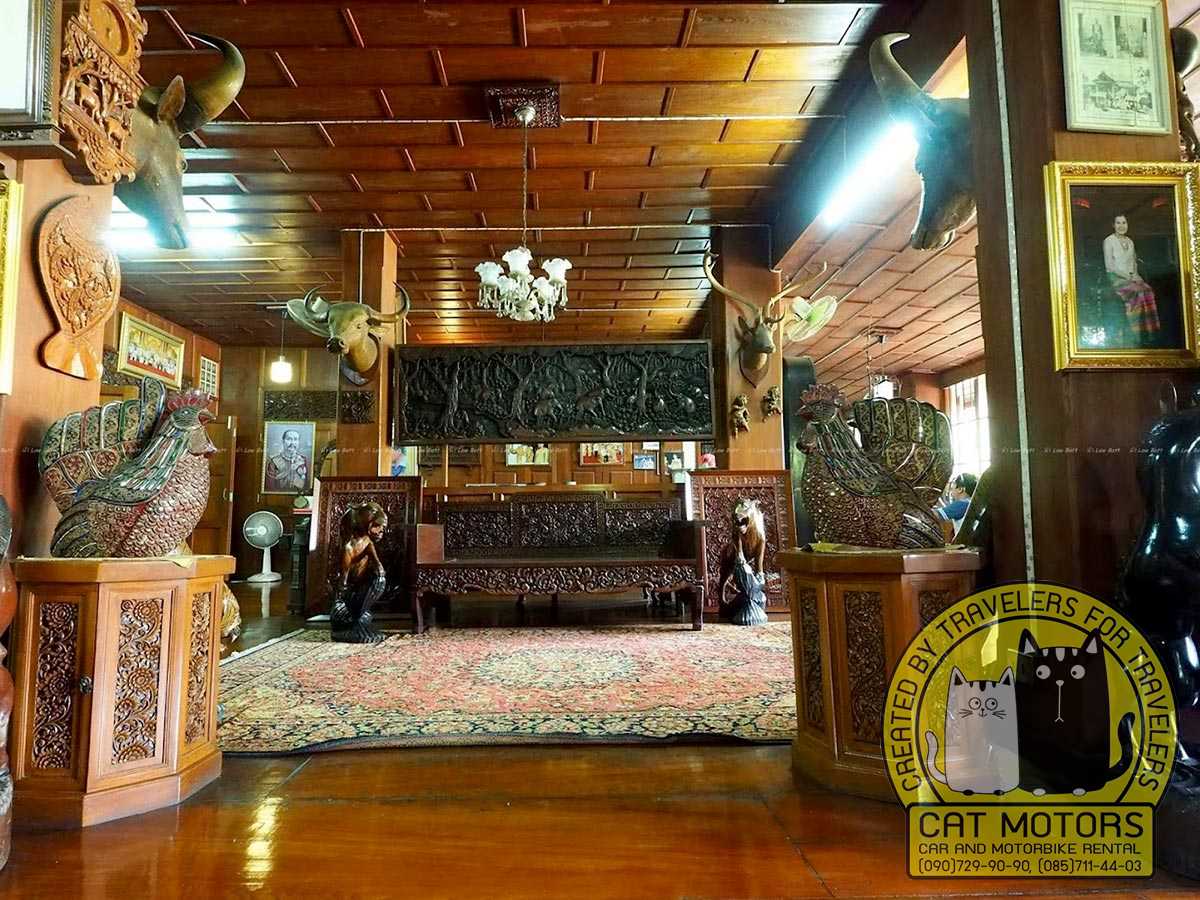
Step inside a traditional Lanna-style house that serves as a gateway to Phrae’s rich local culture and lifestyle. Engage in cultural performances, partake in workshops on weaving, carving, cooking, and music, and admire the exquisite handicrafts, costumes, tools, and utensils that showcase the area’s artistic traditions. If you are into folk crafts, you will love this.
Wat Phong Sunan: Temple of the Tortoise
Also found in the enchanting town of Phrae, Thailand, this small yet magnificent temple offers a unique experience. A highlight is the long reclining golden Buddha, gracefully visible beyond the temple walls, and a huge golden turtle statue.
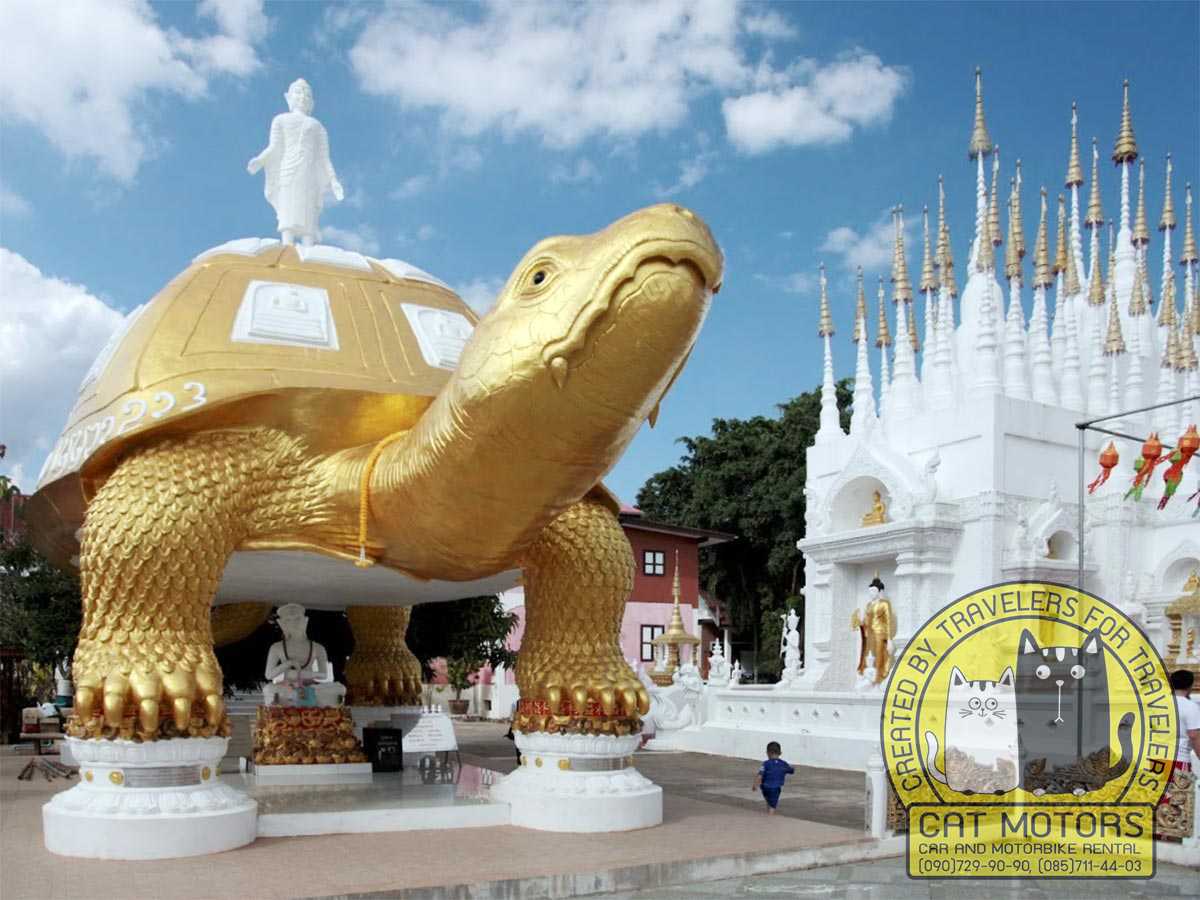
Its detailed white main hall and beautiful golden tips house the most amazing golden adornments, intricate nagas, Buddha images, and garlands of bank notes. Venture further to discover a golden chedi embraced by statues while another building unveils a vibrant display of colorful frescoes.With its serene ambiance and limited footfall, the experience offers a tranquil sanctuary to soak in the beauty and engage in enlightening conversations with the English-speaking head monk.
Experience Adventure Outdoors
Ban Pin Railway Station
Ban Pin Railway Station (Google Map) is a railway station located in Pin Subdistrict, Long District, Phrae Province, Thailand. It is a part of the Northern Line of the State Railway of Thailand (SRT) and is a class 3 railway station, situated 488.1 kilometers from Bangkok railway station.
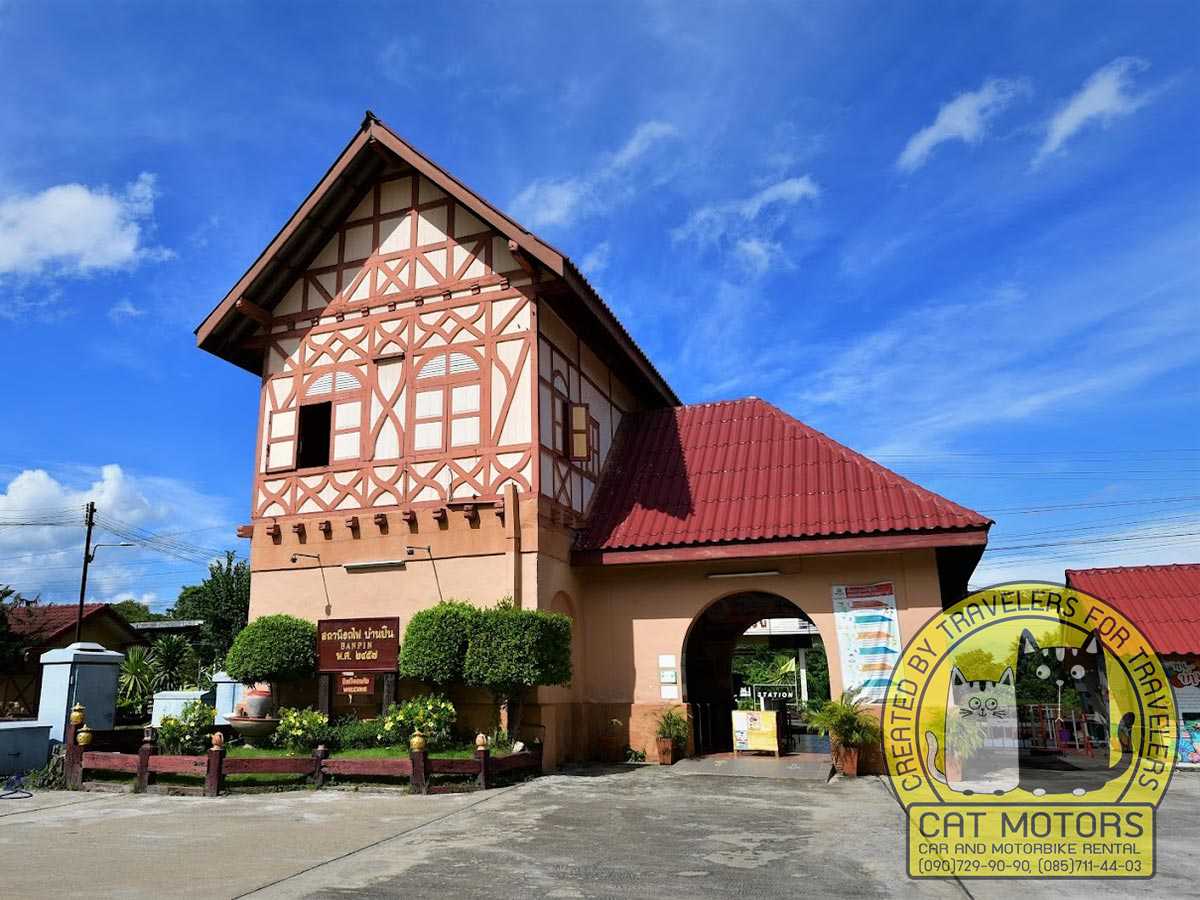
Established in 1907 as a part of the Northern Line extension from Pak Nam Pho to Chiang Mai during the reign of King Chulalongkorn (Rama V), the Ban Pin Railway Station sits as an important transportation link in the Northern region of Thailand.
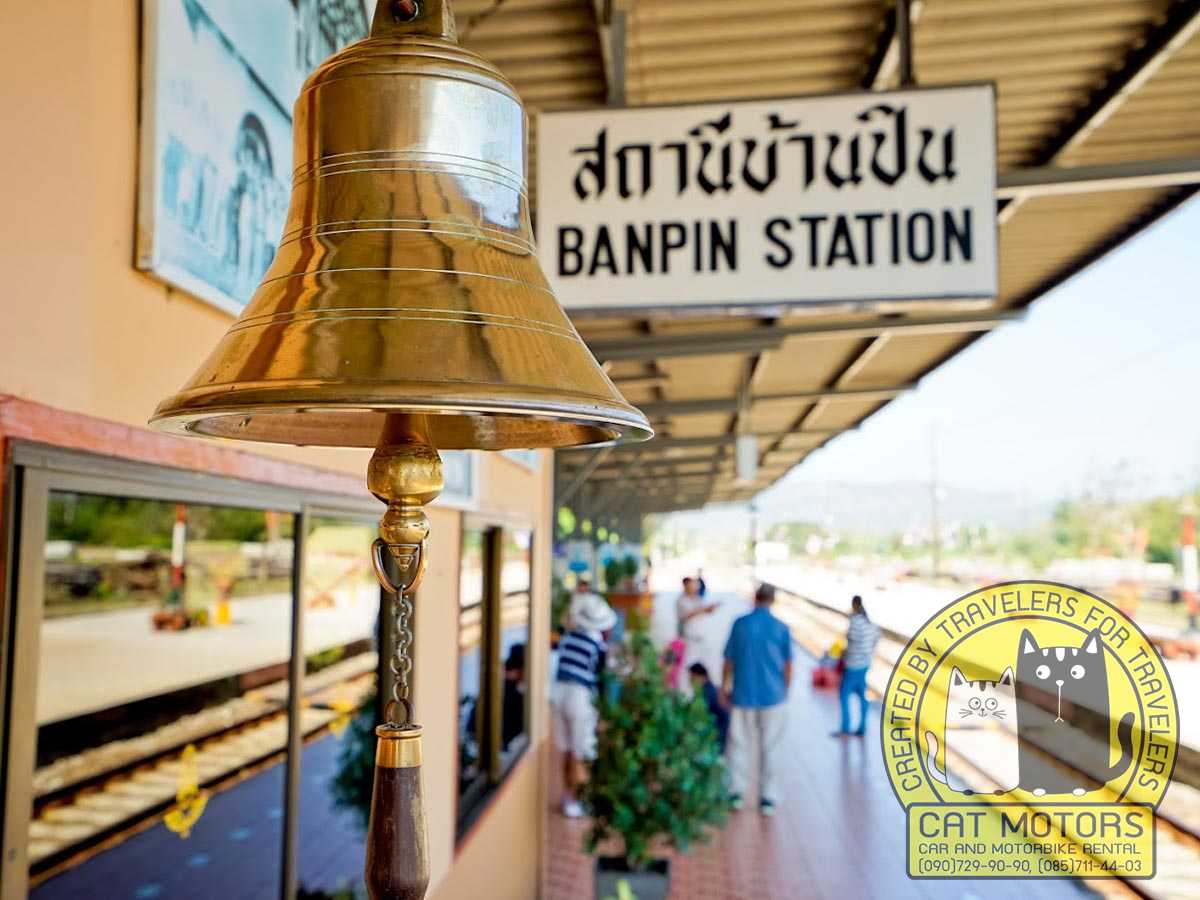
Like many railway stations in Thailand, it provides a key access point to local communities, supporting both passenger and freight transportation. The station’s convenient location makes it an ideal starting point for exploring the scenic beauty and cultural richness of the Phrae province.
Ban Thung Hong
Situated in Thung Hong village, along Yantrakit Koson Road in Tambon Thung Hong, the Mo Hom Ban Thung Charoen Community Enterprise stands as a testament to age-old local wisdom and traditional craftsmanship. This center is renowned for producing the distinctive Mo Hom shirts, which have gained national recognition.
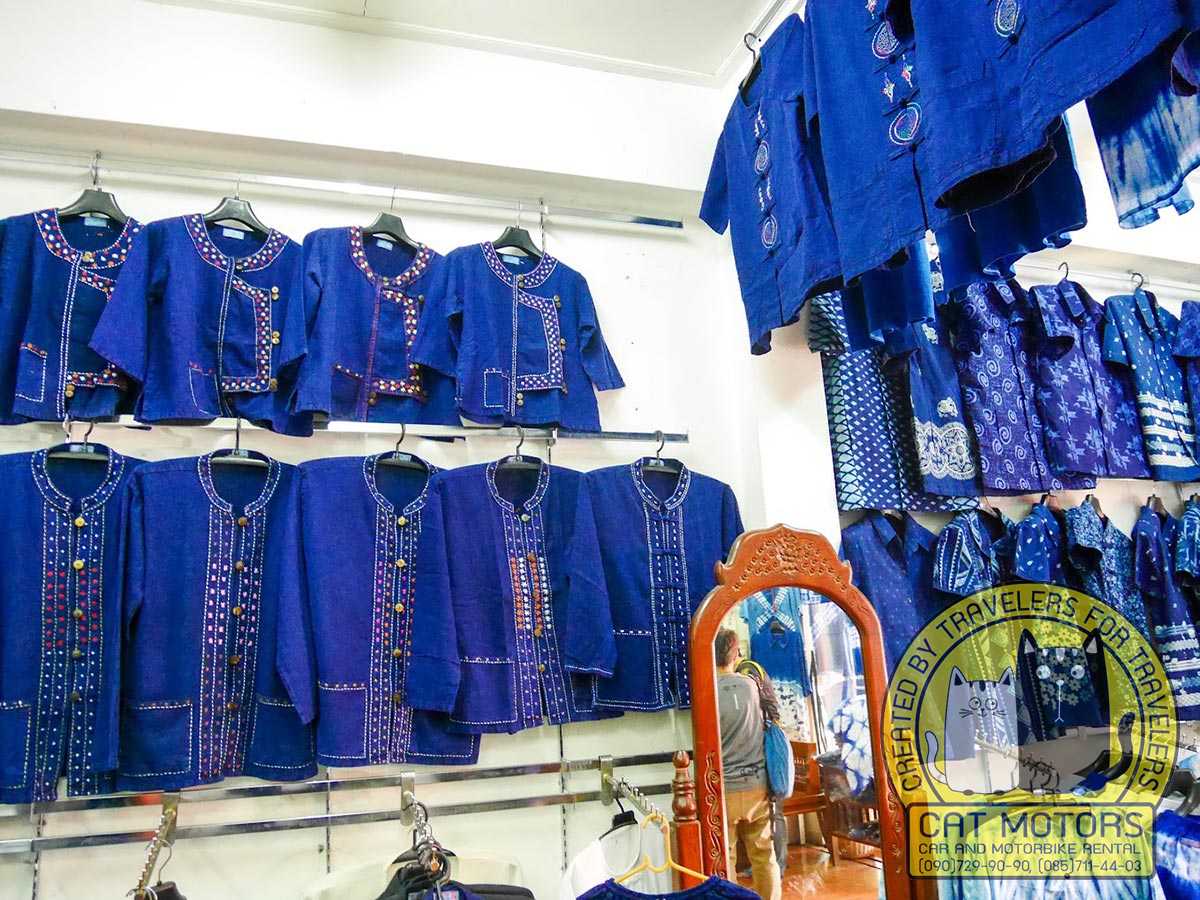
The legacy of these shirts traces back to the ancestors who migrated from Muang Phuan, Xiangkhouang in Lao PDR between 1817 and 1837. This traditional artistry has woven itself into the cultural fabric of the Phrae province, making it truly unique. Such excellence in craftsmanship has earned the village prestigious recognition as the OTOP Village Champion in Handicrafts Tourism.
The term “Mo Hom” has its roots in the local language, where “Mo” refers to a water-carrying container, and “Hom” denotes an annual plant. This plant’s stems and leaves undergo fermentation to extract a rich blue dye, which is used to color white cotton, creating the iconic Mo Hom shirts.
Beyond its significant contribution to local handicraft, the village also welcomes travelers seeking an immersive cultural experience with its homestay service. As a seasoned traveler, the Natural-dyed Mo Hom Ban Thung Charoen Community Enterprise presents a unique opportunity to delve into the local heritage and experience the timeless artistry first-hand.
ATV Tours
Enjoy the thrill of riding an all-terrain vehicle through the province’s forests, hills, and fields. You can also visit some attractions along the way, such as the Grand Canyon and the Royal Flora Rajapruk. You can choose from different levels of trails and vehicles, depending on your experience and comfort.
Tie-dye workshop
Do you want to encourage a more creative outing? You can learn the art of tie-dyeing and fabric painting from local artisans in the province. Create your own colorful patterns and designs on cotton or silk fabrics using natural dyes and traditional techniques. You can also take home your creations as souvenirs or gifts!
Mae Chok Mineral Hot Spring
Uncover the hidden gem of Phrae, the Mae Chok Hot Spring (Google Map), nestled in the cozy Ban Mae Chok, Tambon Mae Pak. Boasting a soothing temperature of 80 degrees Celsius, this hot spring is the perfect spot to start your day, cloaked in a misty veil from the effervescing, sulphur-laden steam.
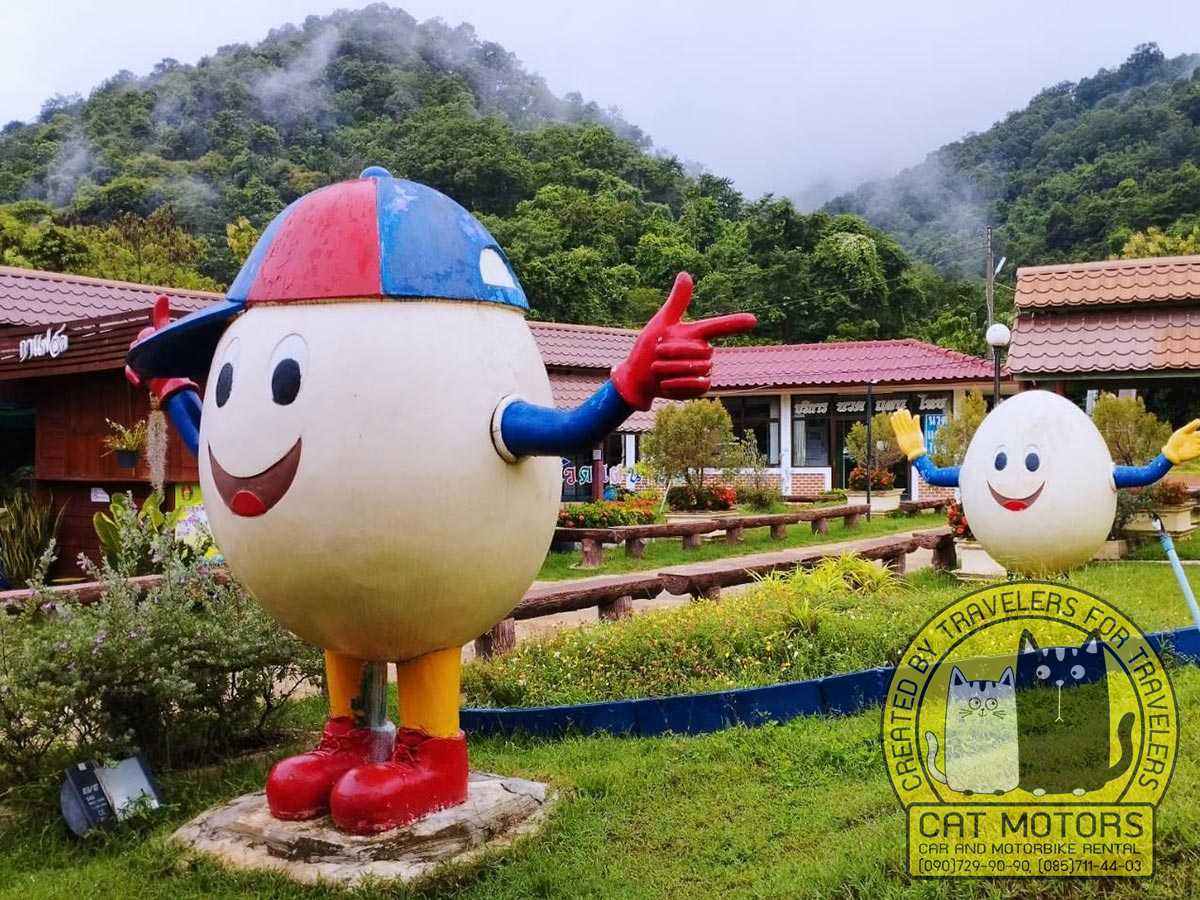
To get there, take the scenic Long-Wang Chin route, which is a mere 5 kilometers from the headquarters. On reaching Ban Mae Chok, keep an eye out for Ban Mae Chok School on your right. The school lawn houses an array of hot springs spread across a lush 10-rai area.
Thanks to a recent upgrade by the Mae Pak Sub-district Administration Organization, Mae Chok Hot Spring now features traditional Thai massage rooms, making it a perfect haven of relaxation. With three dedicated bathing rooms (30 Baht/person), a private natural mineral water bath room (40 Baht/person), and two rooms housing hot mineral water pools, you’re spoilt for choice.
Immerse yourself in this tranquil setting, open daily from 8:00 a.m. to 5:00 p.m., and let the healing waters of Mae Chok Hot Spring rejuvenate your mind, body, and soul.
Phrae province awaits with open arms, inviting you to discover its awesome activities and experiences and indulge in a rich lineage of culture, history, and outdoor jaunts.
Almost anyone can have a remarkable time being taken away by captivating stories of historical landmarks and temples, marvel at the artistic masterpieces housed in museums and galleries, and venture into the heart of nature through thrilling adventures. Let Phrae ignite your wanderlust and leave you with unforgettable memories forever lingering in your heart!
Savour The Gastronomic Drinks & Delights Of Phrae
Indulge your taste buds and embark on a culinary adventure in the beautiful province of Phrae. From the rich tapestry of traditional Northern Thai dishes to the vibrant street food scene and unique local beverages, Phrae offers an array of flavors to captivate any food enthusiast.
But before you pack in a punch full of flavor, it’s best to know what authentic tastes you can look forward to that define its gastronomic heritage. The following are just some of its mouthwatering highlights.
Traditional Northern Thai Dishes
Step into the world of Northern Thai cuisine, where the flavors of the Lanna and Isan kingdoms and neighboring Myanmar and Laos come together in a symphony of taste. In Phrae, you can relish the following iconic dishes:
- Khao Soi Gai: A tantalizing dish featuring egg noodles immersed in a creamy coconut-based curry broth, garnished with succulent chicken thighs and crispy fried noodles. Lime wedges, shallots, chili oil, and pickled mustard greens further enhance the burst of flavors.
- Sai Oua: Delight in the fiery goodness of this spicy pork sausage, expertly seasoned with garlic, herbs, red curry paste, and chili. Whether enjoyed with sticky rice or relished as a snack with a sip of whisky, Sai Oua is a true Northern Thai delicacy.
- Gaang Hang-Lair: Uncover this pork belly curry’s mild and aromatic flavors with Burmese origins. Tomatoes, ginger, garlic, and a fragrant spice blend form the base of this curry, which is often savored during festive occasions and ceremonies.
- Kanom Jeen Nam Ngiew: Take pleasure in this noodle dish featuring a light, flavorful broth made from tomatoes, pork blood, pork meat, and fermented soybeans. The dish is beautifully garnished with bean sprouts, fried garlic, coriander, and a dash of lime juice.
- Krabong: Treat your palate to the crispy goodness of this fried snack made from thinly sliced vegetables coated with a spicy flour batter. Whether it’s papaya, banana blossom, onion, or pumpkin, each bite offers a delightful crunch followed by a soft, savory interior.
Get To Know Their Unique Local Beverages
Quench your thirst and complement your meal with the distinct flavors of Phrae’s unique local beverages. Discover refreshing elixirs that offer a glimpse into the local culture:
- Nam Oy Sai: Refresh yourself with the invigorating combination of fresh sugarcane juice, lime juice, and a hint of salt. Nam Oy Sai provides a refreshing balance of sweetness and tanginess, making it the perfect thirst quencher on a warm day.
- Nam Som Satho: Rock the fizzy and slightly alcoholic adventure with Nam Som Satho. This effervescent beverage is created by mixing fermented rice wine with soda water and ice, offering a unique and invigorating drinking experience.
- Nam Matoom: Experience the soothing chattels of Nam Matoom, a drink crafted from bael fruit boiled with sugar and water. With its fragrant aroma and gentle flavor, this beverage is known for its calming effect on the stomach, making it a delightful choice to accompany your meal.
Street Food And Snacks
While exploring the bustling markets, lively stalls, and food trucks of Phrae, prepare to immerse yourself in a vibrant street food culture. Discover an array of delectable street food and snacks that will tempt your senses:
- Khao Lam: Experience the joy of this sweet sticky rice dessert, lovingly cooked in bamboo tubes over charcoal. Infused with the richness of sugar and coconut milk and sometimes accompanied by black beans, taro, or young coconut, Khao Lam is best savored while still warm.
- Gyo-Tuai Noodle Truck: Encounter a mobile treasure trove of noodle delights at this food truck. Savor the diverse noodle options and select your preferred toppings, such as pork balls, fish balls, wontons, or crispy pork, all swimming in a flavorful broth.
- Ran Khaw Heniw Mamwong Kong Hnun: Delight your sweet tooth at this dessert stall, where many treats await. You’ll find the perfect indulgence to satisfy your cravings, from ice cream and shaved ice to crepes, waffles, and toast with various mouthwatering toppings.
Epicurean Haven - Recommended Restaurants And Cafes In Phrae
With your grumbling stomach demanding places to experience Phrae’s delights first-hand, you might want to know where to follow your nose after learning what types of foods you can expect.
So for those looking forward to a delectable journey, here’s a carefully curated selection of Phrae’s most highly recommended restaurants and cafes, applied based on the esteemed ratings of Google and TripAdvisor. So prepare to tantalize your taste buds and immerse yourself in a world best suited for any foodie!
Rommaiyai Restaurant
Take your tastebuds to new heights at Rommaiyai Restaurant (Google Map), a beloved dining establishment that has captivated the taste buds of visitors and locals alike. Situated in the heart of Phrae, this popular restaurant is renowned for its diverse menu, which showcases a tempting array of Asian and Thai dishes, catering to all palates. From aromatic curries to savory stir-fries, Rommaiyai offers a delightful gastronomic experience that will leave you craving for more.
SuanGlangNa Homestay
Immerse yourself in the local culture with a visit to SuanGlangNa Homestay (Google Map), where you can participate in cooking classes and savor meals made from organic ingredients sourced from their garden. Dive into the world of traditional Northern Thai cuisine and indulge in homemade desserts and beverages that capture the essence of Phrae’s gastronomy.
Gingerbread House Gallery
Step into a world of charm and culinary delights at Gingerbread House Gallery (Google Map), an enchanting B&B and popular café tucked away in the picturesque province. Neatly positioned within a beautifully crafted teak wood house, this cozy establishment offers a delightful blend of flavors and cuisines that will leave you wanting more.
Whether you’re craving a comforting American or European-style breakfast, flavorful Thai delicacies, satisfying noodles, or an irresistible plate of spaghetti, Gingerbread House Gallery will indeed offer a little taste of home.
ฮอม Hom
Embark on a culinary journey through the heart of Phrae at ฮอม Hom (Google Map), a beloved local restaurant that captures the essence of authentic Thai flavors. Tucked away in an old house near the historic city wall of Phrae, this charming eatery offers a simple and affordable dining experience in a cozy atmosphere.
The menu features a delightful range of traditional dishes, including flavorful noodles, aromatic fried rice, comforting curries, soul-warming soups, refreshing salads, and tempting desserts.
Fresh Food Market (ประตูชัย แพร่)
There’s nothing like tasting Thai street food (Google Map), and Phrae has them in spades. The province boasts a bustling street food market that offers a diverse array of mouthwatering dishes and snacks that will entice your taste buds.
One of the highlights at Pratu Chai Phrae is the renowned Yentafo, a noodle soup with a distinctive pink broth accompanied by fish, tofu, and crispy wontons. This beloved dish is praised for its rich flavor, generous portions, and the use of fresh, high-quality ingredients. The broth is so flavorful that many customers find it unnecessary to add any additional seasoning.
Open in the evening, Pratu Chai Phrae attracts a vibrant crowd of locals and tourists alike, eager to explore this street food haven’s enticing flavors and vibrant atmosphere.
As you traverse the culinary landscape of Phrae, allow your taste buds to be enchanted by the myriad flavors and aromas that define this beautiful province. From traditional Northern Thai dishes to street food wonders and unique local beverages, The area’s food scene promises an unforgettable journey for all epicurean enthusiasts.
Quick Facts
Location: Phrae is located in northern Thailand, approximately 555 kilometers away from Bangkok. It’s nestled in the lush valleys of the Yom River, surrounded by majestic mountain ranges.
Historical Significance: Phrae is rich in history with its establishment dating back to the Mon and Khmer eras. The town is known for its well-preserved traditional wooden houses, indicative of its Lanna heritage.
Attractions: The city is home to many fascinating temples, with over 200 sprinkled throughout the province. Among the notable ones is Wat Phra That Cho Hae, a sacred temple with a stunning Chiang Saen-style pagoda wrapped in copper and gold.
Cultural Heritage: The city also maintains a rich tradition of weaving, with its signature product being the Mo Hom, a deep indigo-dyed cotton cloth that has been produced in the area for generations. The Ban Thung Hong village is the hub for this traditional industry.
Natural Sites: Beyond its cultural offerings, Phrae is surrounded by natural beauty, including the Wiang Kosai National Park, which hosts Thailand’s first twin waterfalls. The park is also known for its caves and bird-watching opportunities.
Gastronomy: Local cuisine is a vibrant fusion of northern Thai and Lanna culinary traditions, with dishes like Kaeng Hang Le (a Burmese-style pork curry) and Sai Oua (northern Thai spicy sausage).
The Hidden Gem: Despite its rich cultural heritage and natural beauty, Phrae remains one of Thailand’s least visited provinces, making it perfect for travelers seeking to escape the tourist trail and have a more authentic Thai experience.
Climate: Phrae experiences a tropical climate with three distinct periods: the hot phase (March to May), the rainy phase (June to October), and the cool phase (November to February). The latter is considered the best time to visit.
Transportation: Phrae has its own airport with regular flights to and from Bangkok. Buses and trains also service the area, and there are options for local transportation, including songthaews and tuk-tuks.
Accommodation: While Phrae might be off the beaten track, it’s home to a range of accommodations, from quaint guesthouses to luxury resorts, catering to different kinds of travelers.
As a pro traveler, make sure to respect local customs and traditions, enjoy the local food, and take time to explore both the cultural heritage and natural wonders of this unique and beautiful region. Phrae is truly a Thai treasure waiting to be discovered.
Pros & Cons
Remember, the pros and cons can vary widely depending on personal travel preferences. What one traveler may view as a con, such as limited nightlife, another might view as a pro for a peaceful getaway. Always consider what you’re looking for in a travel experience before choosing your destination.
Pros:
Cultural Immersion: Phrae is steeped in history and culture, boasting over 200 temples and traditional Lanna wooden houses. This provides a rich and immersive experience of Thai culture away from the tourist-heavy areas.
Natural Beauty: From stunning waterfalls in Wiang Kosai National Park to the picturesque Yom River, Phrae is surrounded by natural attractions. It’s a haven for nature lovers and outdoor enthusiasts.
Off the Beaten Path: Phrae is one of Thailand’s lesser-known provinces, making it an ideal destination for travelers looking for a more authentic and less crowded experience.
Local Cuisine: The food in Phrae is a wonderful fusion of northern Thai and Lanna culinary traditions. Foodies will enjoy exploring the region’s unique and flavorful dishes.
Cons:
Limited Tourist Infrastructure: While Phrae has many attractions, it doesn’t have the robust tourism infrastructure that you’ll find in places like Bangkok or Phuket. This means fewer guided tours, English-language services, and Western-style amenities.
Accessibility: While Phrae has an airport, flights are mostly limited to Bangkok, so it may be a bit more challenging to reach than other Thai destinations. Public transportation within the province can also be less frequent and reliable than in more tourist-heavy areas.
Language Barrier: As Phrae is less visited by international tourists, fewer locals may speak English fluently. This can pose a challenge for travelers who don’t speak Thai.
Limited Nightlife: If you’re seeking a vibrant nightlife scene, Phrae might not be your first choice. The province is quieter and more subdued compared to cities like Bangkok or Pattaya.
Our Summary
Phrae is a province that truly captures the heart and imagination of travelers. Its fascinating history, vibrant culture, breathtaking landscapes, and delicious cuisine make it a destination worthy of any bucket list.
The very charm of the province calls, winning over the hearts of history buffs, nature lovers, thrill seekers, and even the most sophisticated foodies by revealing a culture of experiences that reimagine the very meaning of experiencing life to the fullest.
FAQ
The best time to visit Phrae is during the cool season, from November to February. Also, In Phrae, a key event to consider is the annual Songkran Festival, celebrated nationwide in mid-April, which is an especially festive time in the region. The festival involves water fights, parades, and religious ceremonies at the temples.
Some significant historical sites include Wat Phra That Cho Hae, Wat Phra Non, and the Khum Chao Luang mansion, a well-preserved teakwood house from the 1890s.
Main natural attractions include the Wiang Kosai National Park, known for its twin waterfalls, and the Phae Mueang Phi, a park with unique sandstone formations.
Yes, the Maeyom Palace Hotel and the Phoomthai Garden Hotel are both centrally located with good reviews.
Try dishes like Kaeng Hang Le, a pork curry, and Sai Oua, a northern Thai spicy sausage. Local markets and street food stalls are great places to try these dishes.
Consider visiting the small village of Ban Thung Hong, known for its traditional indigo dyeing, and the serene Wat Chom Sawan, known for its Burmese architecture.
The best way to get around Phrae is by local tuk-tuks or songthaews, or by renting a bicycle or motorbike.
Yes, Mo Hom apparel, which is made from local cotton dyed with natural indigo, makes for a unique souvenir.
Local guided tours may be less common in Phrae, but you can check with your hotel or local tourist information centers for recommendations.
English proficiency may be limited in Phrae compared to larger tourist destinations. Learning a few basic Thai phrases can certainly enhance your experience and interactions with locals.
Yes, it’s possible. A day trip to Nan, another province rich in history and natural beauty, is highly recommended. It’s about a two-hour drive from Phrae.
Set off on an unforgettable journey through Northern Thailand with our extensive travel guides. They showcase the best scenic routes and local highlights. For those ready to begin, explore our big bike rental in Chiang Mai. Ensure you review our terms and conditions to be well-prepared. These resources will help you confidently navigate mountain trails and quaint villages.
Our travel advice sections provide crucial tips on staying safe and maximizing your travel experience. Learn about the best times to visit key attractions, participate in local festivals, and manage various road conditions. These insights will enrich your journey, making it both enjoyable and secure. Let us lead you through Northern Thailand’s stunning landscapes and vibrant culture, ensuring your adventure is truly memorable.
- Author: Natcha Lindberg
- Updated: 15/09/2025
- No Comments


